southern culture


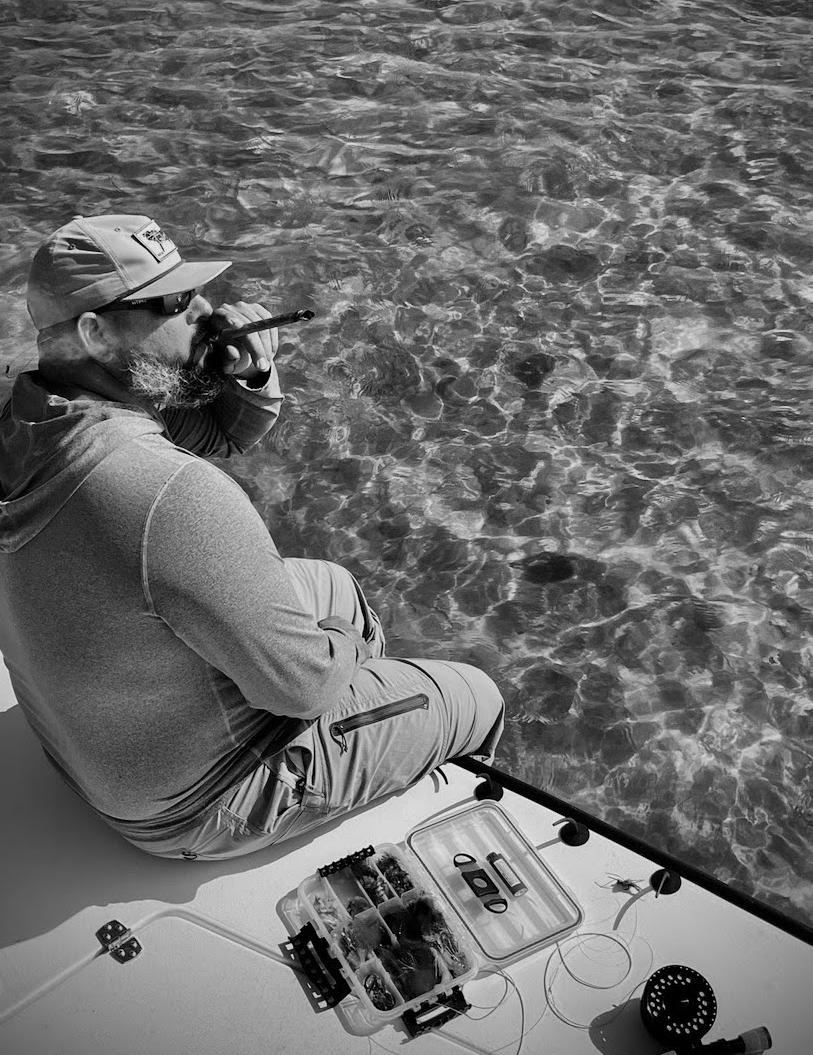
| S.C.O.F ISSUE NO.46 WINTER 2023

JUST RELEASED SALT



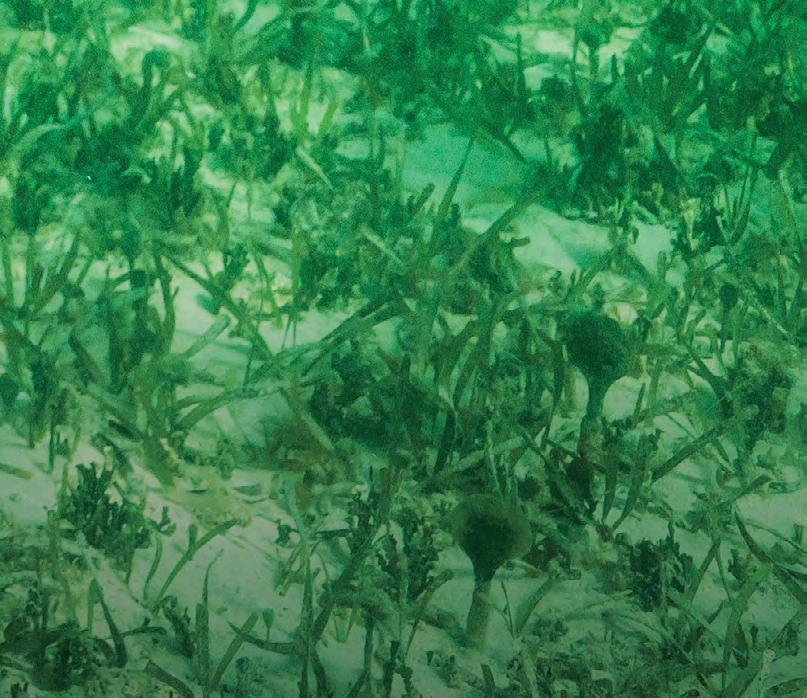
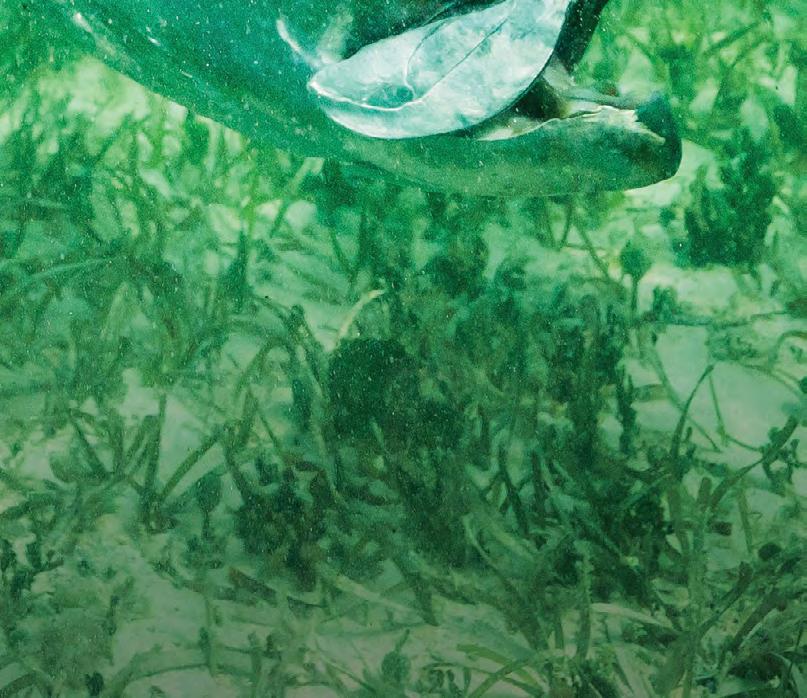





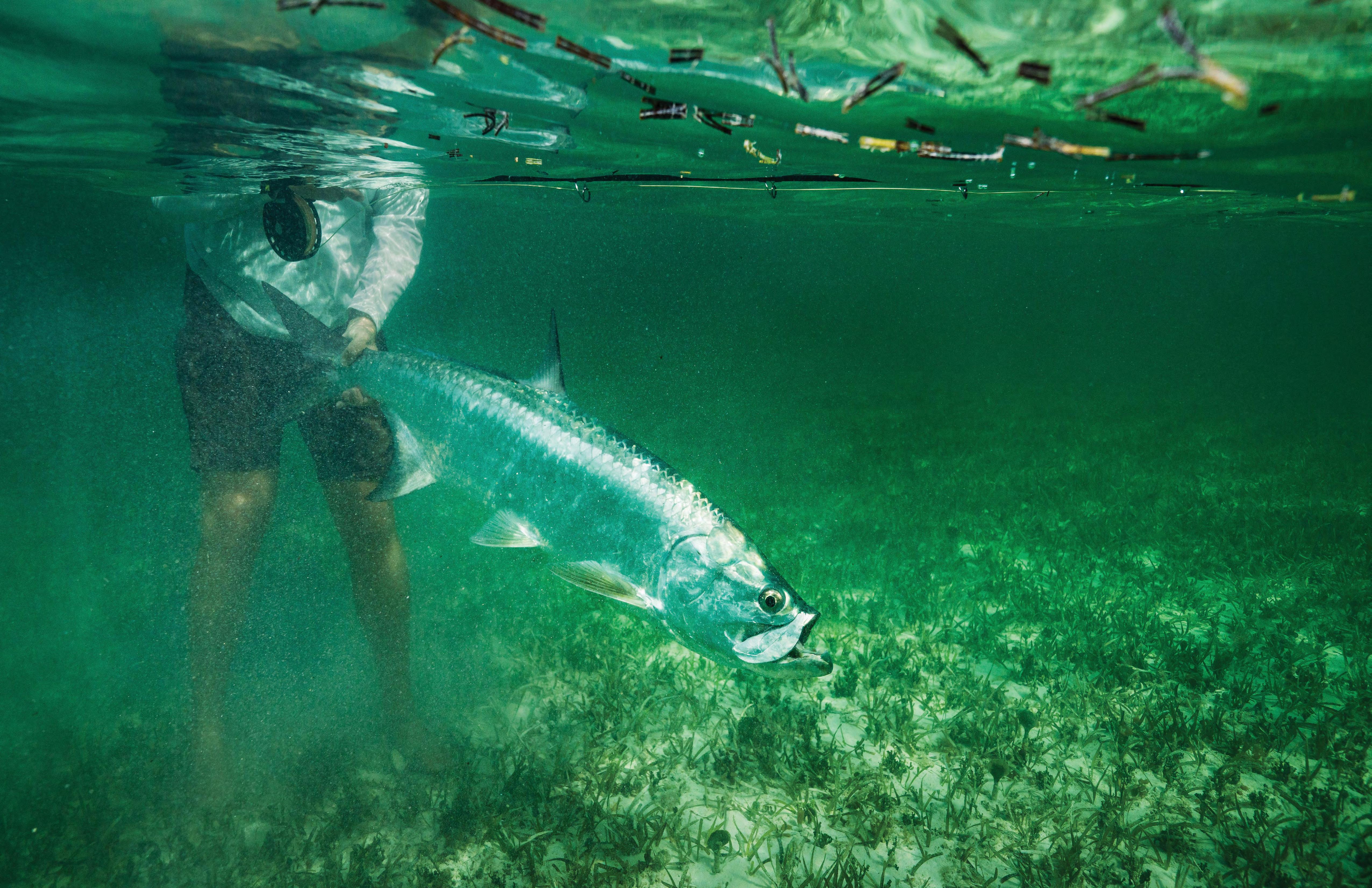
MORE FIGHT, MORE TOUCH

Load shifted closer to the hand prioritizes feel and recovery. 25% greater strength for increased pulling power.


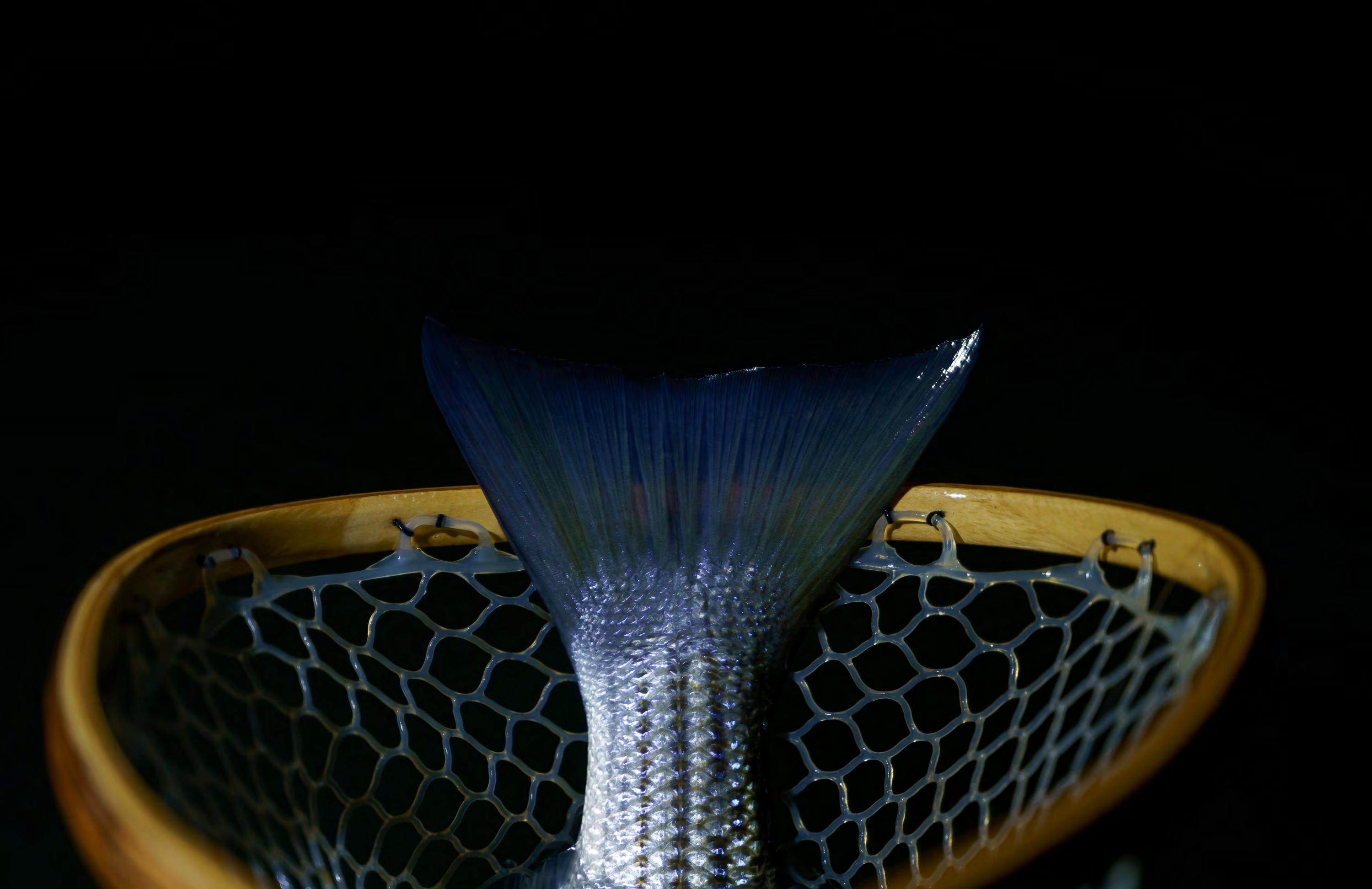
SCOF winter fluffer
Photo: the dark, March 2022
Chad Hoffman
 Photo: New RIver, Virginia - January 2023, Gecko
Photo: New RIver, Virginia - January 2023, Gecko
 Photo: New River, Virginia - January 2023, Gecko
Photo: New River, Virginia - January 2023, Gecko
82 fur and feather matinee with fletcher sams video by leigh gardner
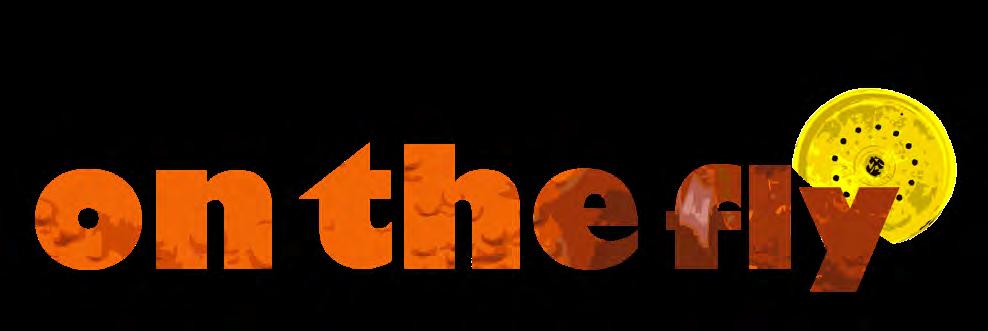

84 tall tails: janus' game: the two faces of fly fishing by: jacob eanes photos: colin fuller
98 In praise of the redfish salt marsh by michael steinberg photos: michael steinberg
106 Southernsnag'sCampfires chili recipe by craig haney
112 back page by paul puckett and mike benson
8
24
dauphin
mississippi
drew wilson 28 EMERITI: don't itch the twitch
david grossman
steve seinberg 40 scof meets the fellas at MMA Fishing by john agricola 48 fandumb by
agricola
alan broyhill 54 The Last Father-Son Fishing Trip Part One by
agricola
gecko 70 conservation corner
steinberg
frederick stivers + hank 76 mardi gras reds
gus jarvis
hight
Photo: D&D Grocery, Barnardsville, NC November 2022, Hank
scof winter fluffer 22 a letter from john
haiku by the
of
art:
by
photos:
john
photos:
john
photos:
by michael
art:
by:
photos: gordon
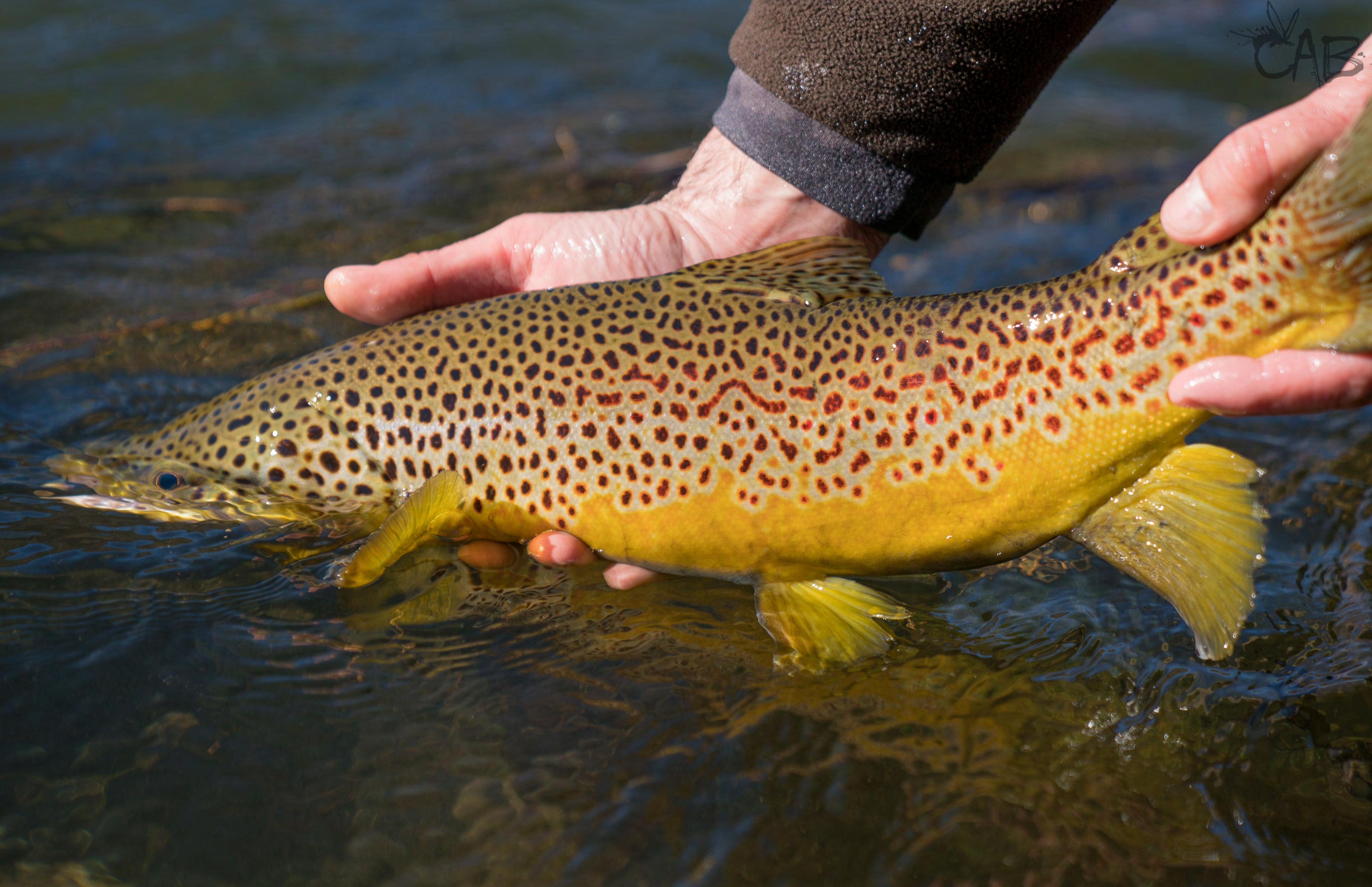 Photo: White River, Arkansas - a month in 2019, Alan Broyhill
Photo: White River, Arkansas - a month in 2019, Alan Broyhill
The Takeover
Managing editor John Agricola
Editor at large
Creative Director & Chief of Design

the nunnehi issue
Collin Fuller
Managing editor emeritus: David Grossman
Creative Director emeritus: Steven Seinberg
copy editor emeritus: Lindsey Grossman
ombudsman: Dale the Gamekeeper
general inquiries and submissions: southerncultureonthefly@gmail.com

advertising information: southerncultureontheflysam @gmail.com
cover image: Jamie Bailey, 2022
s.c.o.f
issue no. 46
Winter 2023
Michael Steinberg
Hank Ads & Marketing Director Samuel L. Bailey
David
Craig
Frederick
"Gecko"
Media Director Alan Broyhill contributors:
Grossman Steven Seinberg
Haney The Dauphin of Mississippi Chad Hoffman
Stivers
Gus Jarvis Gordon Hight John Agricola Sr. Paul Puckett Mike Benson Jacob Eanes
MIDDLE-AGED MUTANT NINJA SCOFFERS

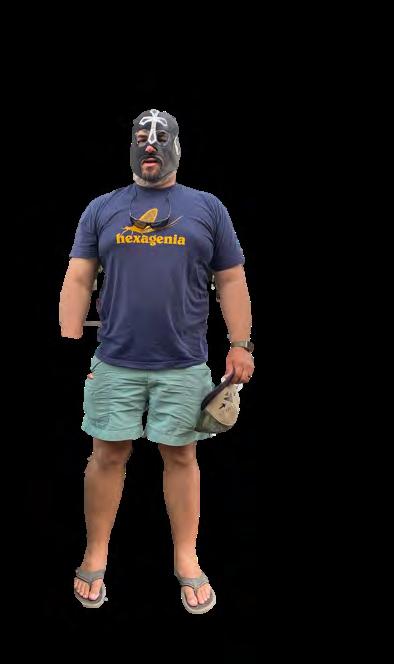
AND HANK

SAM BAILEY JOHN AGRICOLA
cool dad
huge yelawolf fan
rare mineral expert too many master's degrees


MICHAEL STEINBERG HANK HERSHEY
tenured permit wrangler chill AF smells normal heir to the chocolate throne

20 S.C.O.F MAGAZINE 21 S.C.O.F MAGAZINE
WhenTom McGuane found Big Pine Key, he made the major life decision to uproot himself from Michigan and go off the respectability grid in favor of a kind of renaissance for anglers and writers. He discovered the place by reading about world records in Field and Stream. In Guy De La Valdene’s 1973 film called Tarpon, a melange of creatives and anglers living amongst one another pioneered a new form of tarpon fly fishing. They achieved the absolute height of fish pornography as art only to be lost to time and rediscovered, reformed, and truncated by Jose Wejebe in the Spanish Fly. Later on, Will Benson and Dave Teper at fly fishing film company World Angling further compressed the form to just be the eats and the jumps. This rough sketch of tarpon videography covers the gamut from artful origin to steadfast practitioners to modern guide promotion. We at SCOF 2.0 are rooted to the most unassuming place for practicing the fly arts—Alabama—home of the metal flake bass guzzlers of Bassmaster trails. We doubt we’ll ever be held in the same artistic light as Guy and Tom, but we promise to explore more than just the money shots.


As if putting a magazine together wasn’t challenging enough, we are doing it here in “the Sahara of the Bozarts,” to use H.L. Mencken’s turn of phrase. By invoking him here, I’m grinding one axe with tournament anglers of conventional fishing tactics, and also with Yankee metropolitan journalists from the 1930s and ‘40s who
pejoratively labeled the South a “cultural backwater.” This insult so assailed writers in the South that they formed a resistance to regional snobbery. The “I’ll Take My Stand” agrarian writers were responding to the perception that Southerners were backwater listless idiots and the prevailing notion that they had very little to say about the world was denied with vehemence. Men like Robert Penn Warren, Andrew Lytle, Allen Tate, and Donald Davidson put their creative energies into responding to the contempt many of the literati felt towards them.
We in the modern South are more often trying to prove that we are a distinctive region, one that is unique from the West or New England. We export all kinds of culture from the best football teams to corporate fried chicken chains and the God-fearing Love of Wally World. But in Alabama, we are not only rich in commercial exports but also in biodiversity. If we can keep from polluting our rivers and impoundments in favor of greedy capitalists lured South with cheaper taxes and non-union labor, we may hold onto said biodiversity. But I digress.
“Ayeee,” you might be mumbling, “where is the wistful dreaming for spring that Grossman was so adept at sharing?” For me in Alabama, the dreariness of winter is not here yet. In fact as I write this note, a tornado warning is in effect. There’s no longer time for basking in the glow of heady literature of the Southern Agrarians, or McGuane, or Harrison, or Brautigan. It’s obvious how Florida became the epicenter for saltwater fly fishing. They have the best fish. If it weren't for tarpon, I’d categorize Florida as something other than Southern. Perhaps a New Jersey hybrid designation
makes more sense. As it is for this magazine, I am damn glad we can call the home of tarpon, snook, permit, redfish, and bonefish a Southern locale. This prime example of cooptation is what we Southerners do best.
SCOF’s mini-renaissance in Alabama is significant because trout are not necessarily the focus for Southern anglers in Alabama. You’re far more likely to hear redeye talk, or redfish talk. Hell, even a Jack Crevalle can come to play in Alabama waters. Perhaps an Alabama tarpon is something to put on our individual bucket lists. Sure, trout is the most popular species for many fly fishermen. Then again, most trout don’t belong where we catch them (it’s an invasive species 90% of the time). So if there’s a halo over trout, it’s a broken one. Most Southern anglers are different because in addition to our overactive imaginings of carp as bonefish, or gar
as ‘cuda, there is the love of striped bass that requires being present and ready for a fight over distantly imagining some other quarry in its place. Redfish keep winters interesting and we visit the Carolina low country and Hopedale, La., in this issue. Not to say we won’t wander far and wide from time to time, dip our toes in alien waters. But we are going to keep the local in our scope as often as we can. And from a Southern perspective, always. Gadsden, Ala., will never be the Keys, but there’s just as much biodiversity throughout our state. If you squint and cock your head just so, you’ll start to see nervous water. No reason we can’t achieve an awakening here in the sticks, see the treasures of our everyday life, and maybe even inspire us to protect our truest birthright. We hope you’ll come with us on this endeavor. If the Nunnehi can thrive in our hills and hollers, so can you. So buck up, and practice your craft. It’s worth it.

22 S.C.O.F MAGAZINE 23 S.C.O.F MAGAZINE A letter from John, the editor
Cola by Gecko




with The Dauphin of Mississippi Haiku the rainbow that jizzed up my net I cannot blame him. One last shot to write his name On the planet's face SO WE ADDED SIX. IT TAKES ONLY ONE SMALL CHANGE TO CATCH MORE FISH. HOODING & SIDE SHIELDS • SWEAT MANAGEMENT CHANNELS • EYEWIRE DRAINS METAL KEEPER SLOTS • ADJUSTABLE NOSE PADS • IMPROVED HY DROLITE TM RUBBER © 2021 Costa Del Mar, Inc. All Rights Reserved. can I call you an uber? drew wilson | @drewlr
Designed specifically for shorter, modern spey Rods



scientificanglers.com

Floating Skagit Short Heads


“The Skagit short has a huge payload delivery system and is my go-to when I need to turn over bigger flies and heavy sink tips, especially when using the shorter two-hand rods.”
- Jeff Liskay, SA Ambassador

• Shorter head length for use with short spey rods or when wading deep

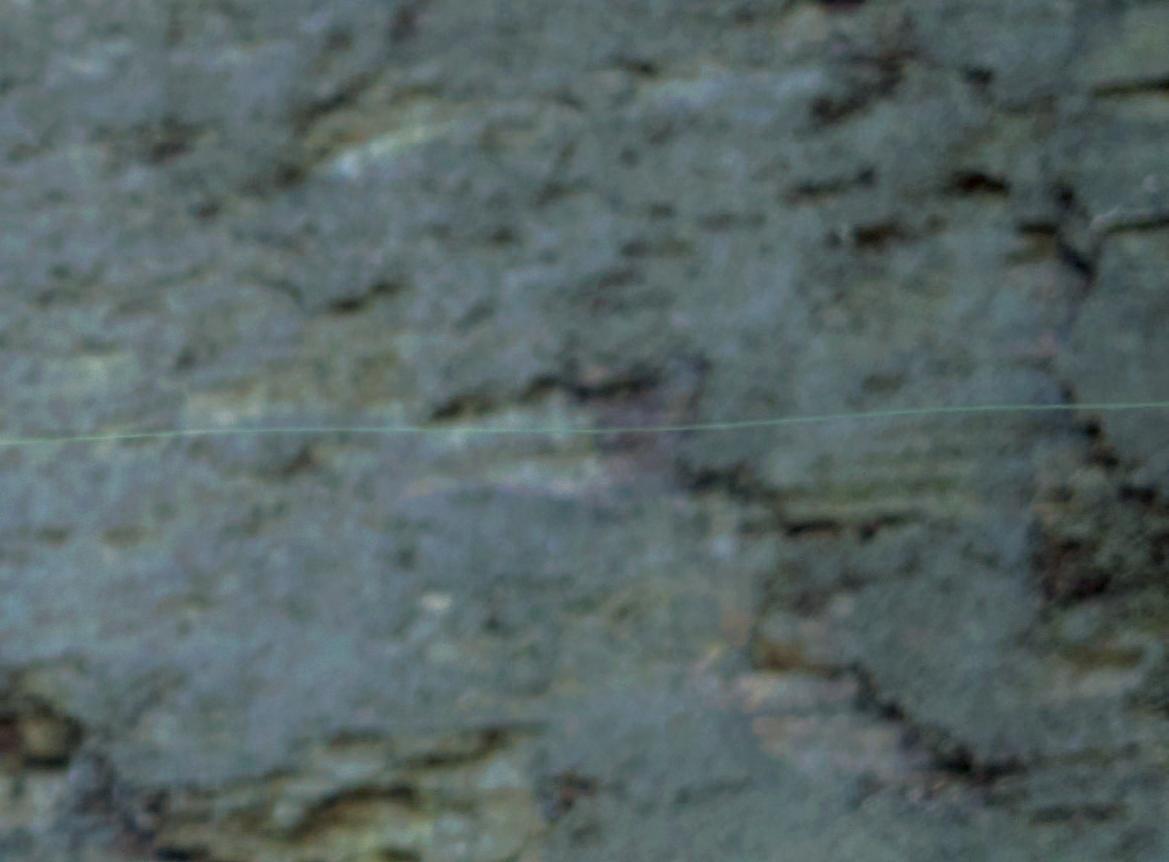

BIGGEST

AND THE PAYLOADS


• Designed to be used with sink tips for targeting steelhead and salmon





• High contrast sighter at the rear of the head identifies the perfect overhang
• Braided multifilament core



EMIRITI: DON'T ITCH THE TWITCH
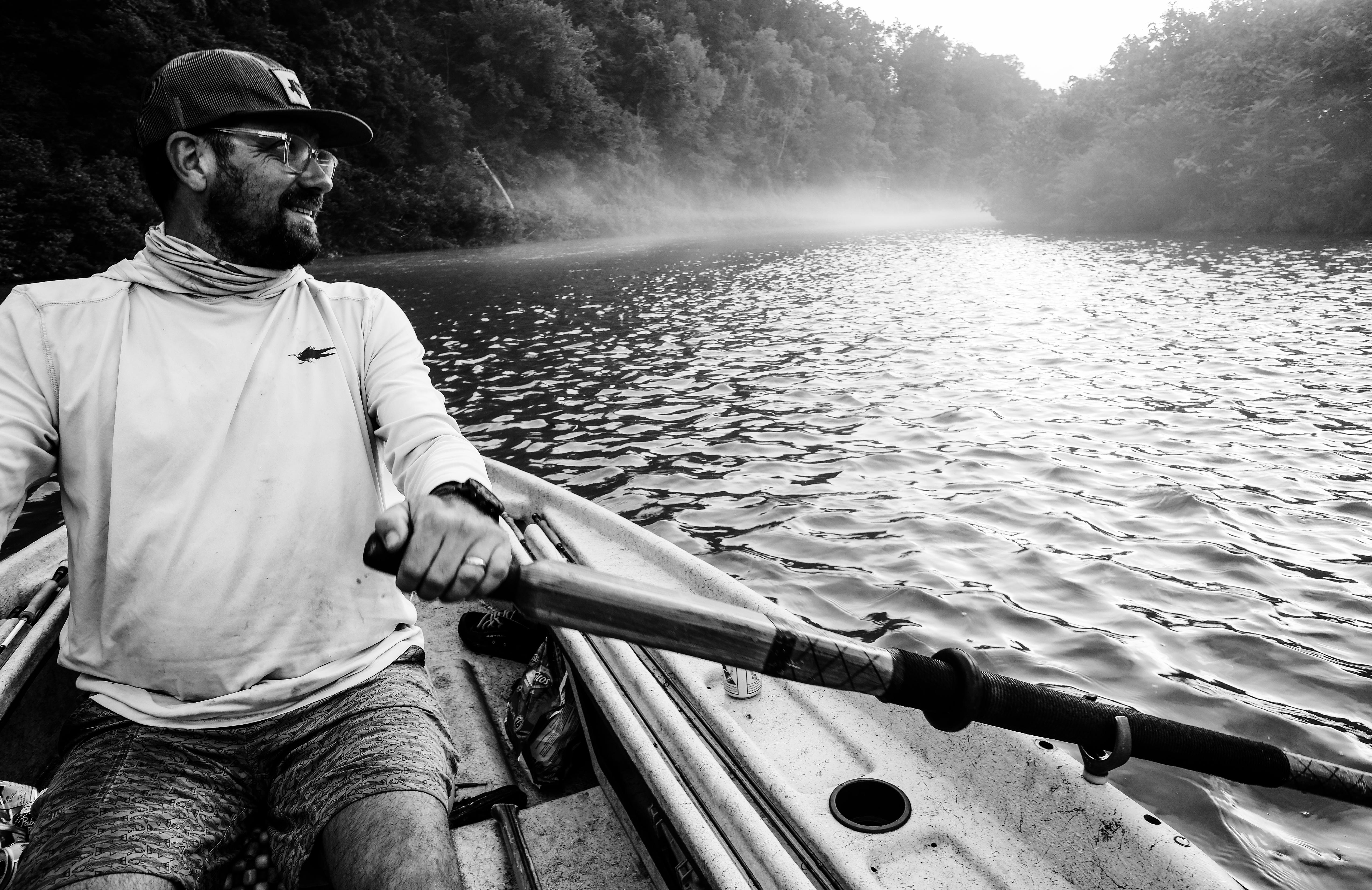 By David Grossman
Photos: Steve Seinberg
By David Grossman
Photos: Steve Seinberg
Sitting still is not something I do well. Daily external manifestations of my twitch include smoking, dipping, and drinking a good part of my life, just to give my hands something to do. I can roll “things” while driving a car because I get bored just driving. I constantly need a television, podcast, or music playing in the background because silence tends to set off my twitchy switch in a big way. I also tend to fill silences with thoughts voiced for the sole purpose of extending awkward silences. I’m a hit at dinner parties. From a fishing perspective, my involuntary soul spasms include the need to row or pole when the fishing is slow, or dicking around with beers, bowls, and poles when I’m not in control of whatever vessel I happen to be on. Don’t get me wrong—if the fishing is footloose and fancy free, I get as dialed as that laser Val Kilmer set off in the seminal ‘80s classic Real Genius (look it up, best popcorn prank ever filmed, also boobs). Over the years, this self-diagnosed ADHD has left me lacking on days when things are slow and the opportunities are scarce.


31 S.C.O.F MAGAZINE
I’ve missed shots at Mother Poon for all kinds of reasons including literally having my dick in my hands. But I’ve missed more fish because of my twitchy nature than I have because of my upper middle class casting abilities. Standing on the front of a skiff forced to do nothing but stare into the abyss does not come naturally for me. I’ve become better at it, but far from what most experts would call serviceable. I still smoke analog cigarettes on the bow, but at least I have a lot more eye discipline when I do it now. I’ve learned to keep an open beer in my back pocket instead of on the deck so as to avoid the dreaded PBR rat’s nest when your bell gets rung. I feel like I’m well on my way to conquering the physical manifestations of my twitch. But beneath this steely adonislike exterior hides my vibrating brain, as if freshly Tased. It’s like I was suddenly blind, but could now bloodhound out a kilo of coke at the airport and take it all for myself. By shutting down my outer twitch, I had brought the crazy indoors. My internal monologue while on the bow hunting Megalopolis atlanticus is a study on topics far and wide, but all sharing the common theme of “no external worth at all.”


32 S.C.O.F MAGAZINE
I think Braveheart would be a better movie if you replaced the main characters with Danny Devito and Rhea Pearlman. Did I forget my lighter?
What was that? Shit, I think that was one. I wonder if they smelled that?
Feet are weird.
Trout would be cooler if they were tarpon. Maybe I should tie some really big squirmy worms, like really big, with weed guards. That would be cool.
If Napoleon was a foot taller, would any of the Franco-Prussian War have been fought? Boobs.
They definitely smelled THAT.
What if reels were made for your feet?

dave's internal monologue


34 S.C.O.F MAGAZINE 35 S.C.O.F MAGAZINE
I eventually snap back to the outside world by a fish I miss or the hydraulic drone of the motor being lowered signaling it’s time to go. I have friends who are able to tune all of this out, all yogi-like and in tune with their surroundings. I call these friends “enemies.” They catch more fish than me, they kill more animals than me, and they generally just piss me off. But I still love them, and one day hope to join them in the principles of Quiet Mind, Quiet body, Tarpon. Until then, I’m stuck with a kinda quiet body, and a fullblown rager in my head. More chemical experimentation may be needed if I’m ever to get over this hump.


37 S.C.O.F MAGAZINE
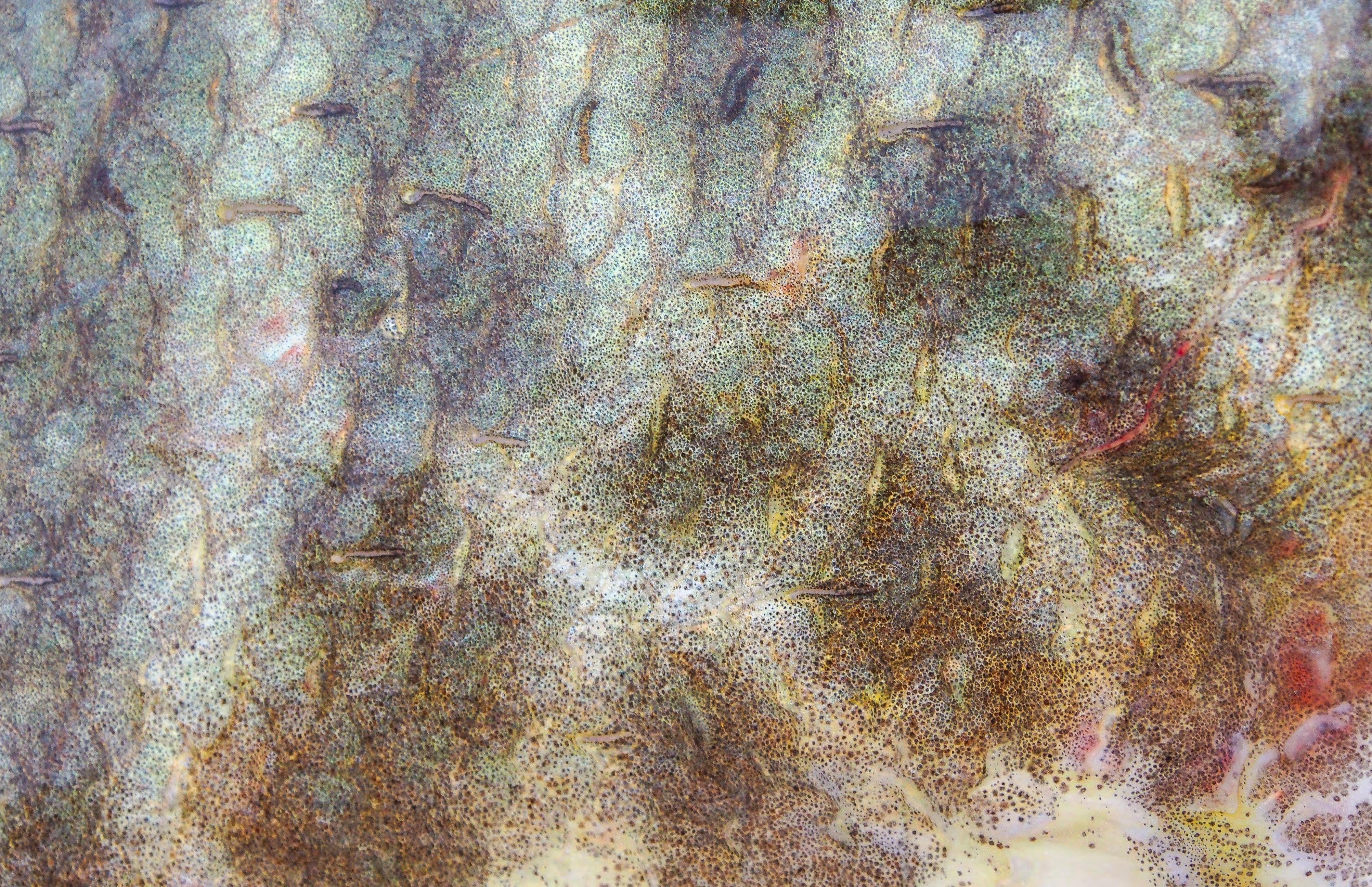
SKIN ALAN
2022
MUSKY
BROYHILL
SCOF Meets the Fellas Over at MMA Fishing
It was a moment that had all the trappings of God’s handiwork, yet an epiphany on my part never really followed. My wife, son and I went to eat at The Crab Shack, and maybe because I was wearing a fly fishing hat, they sat us in the banquet hall as a wart to a table that was 30 fishermen strong. And, there was a clear sho’ nuff leader who began to speak to the whole room. He might as well have winked at my wife, because damn if I didn’t want to immediately argue with him, maybe even throw a punch. It had been that kind of night. I wanted to tell the 30 people at his table at The Crab Shack that this guy was full of shit. He seemed to command the floor, and for a brief moment I thought he was their pastor. I was not far off. He was the leader of MMA fishing, a guide and gear group that plays off the tropes of mixed martial arts. They don't catch fish, they make them submit. So he definitely would have kicked my ass. They were all spin guys, or as they would class it up by saying, they were all conventional guys. The leader projected his voice to the room, saying, “If your sponsor is giving you something, you need to use it. Put it in your videos. Don’t forget to post some GoPro stuff. I know it's annoying, but just do it.” He then moved on to fragmented high points on how to drive search engine optimization. It was a bizarro SCOF-type conversation, but it made me sick after the night I had undergone while trying to do something extra during the holidays. My wife Hillary kept saying, “What is this?” She was wasted after a night in Birmingham at the Zoo Light Safari. I was fed up and made it worse by very audibly saying, “I don't know, some kind

of pyramid scheme.” But who am I to judge another middle-aged man’s pyramid scheme? The whole mixed martial arts bass fishing was over the top, and she was so put off by this redneck bubba fiesta that their refracted light made me look stupid, too, even though I catch fish 10 times cooler than these assholes. My wife was about to start yelling at these momos, and I was on a countdown to her going apeshit. So, I went to the register for Styrofoam boxes and began scraping my calamari and fried green tomatoes into the containers.



Even though she had sat us by these shitheels, I tipped the waitress 20 bucks because she was good looking for one; because she had sympathy for me in my current wifey situation for two; and because I knew I would see her again being that this is a small river town and the ebb and flow of things bring us all back into the same humble eddy eventually. When I got home, I looked up this crew of fishing tech bullshit. They had ruined my evening and become a carnivalesque mirror that made me look fat and stupid. I knew I was fat, but I am unaccustomed to feeling stupid.
The next day I was buying brownies for my own plans of checking out, just as my wife had done the night before. Then I saw my waitress walking up to me in front of the Dollar General. She smiled at me and said, “I served you last night.” I wanted to kiss her right there in front of the technicolor black and yellow lights of DG for remembering. I resisted though, as I might be 20 years her senior, and I am married. What would MMA fishing have done? They might have roundhouse-kicked my wife in the head the night before and left with the waitress. As cool and calmly as you can imagine with a
41 S.C.O.F MAGAZINE
bit too much bravado in my voice
I said, “Yeah, it is good to see you again. Have a nice day.” Someone really cool would have taken her back to SCOF headquarters and remembered what it was to bang one out with a total stranger. I had forgotten how over the years of unacknowledged service to my wife. Plus, I would never do that to my wife. For one, I have no compulsion to get cut by half. For two, it is just wrong. But the table of MMA fishers were doing life all wrong anyway if they were including their wives and children at the business meeting at The Crab Shack. I really almost believed it was a megachurch mens’ group but for their silent wives. What did they have that I did not have? I do not have biblical authority over my wife. I mean I do as much as any modern man, but I never try to use that privilege. Except the one time I said, “Because I am the man and I call the shots for this family!” She snickered at the utterance. Recently a friend of SCOF called me and said, “here's a tagline for ya: ‘Two agnostic Jews sell SCOF to four Baptist fundamentalists from Alabama.’” I assured him that this was not what really happened. I even stammered, “We have a Jew, too, and I am a Whiskeypalian who doesn't drink anymore.” That sounded about as cool as “\
Four Baptists take up fly fishing.”
Every year it gets a little better being in this growing Alabamian fly fishing community. Just know wives and future wives, if we ever get 500 true believers in SCOF, I won't make you suffer the tortures of crab shack snake oil slinging with me at the head of the table telling your husbands to use their GoPros. Hand on a stack of bibles.


 photo: Everglades February 2021, Alan Broyhill
photo: Everglades February 2021, Alan Broyhill
fandumb


The little person wrestling show and the Atlanta fly fishing show were like the conjoined twin towers of my indepth reporting into the land of imagined communities, or leisure time competing nations as these two clearly are. I did both, all in one weekend. There’s really no contest between the two; for one I was working the Atlanta show for SCOF, and other than bringing a photographer to Extreme Dwarfanator Wrestling, I was really there to relax and see what all the diminutive fuss was about. I call these competing nations because
both hobbies are about an audience engaging with a leisure time product. Dwarfanator specializes in showcasing little people performances of acrobatic leaping, enduring blows of trash cans, and the yellow cautionary “watch your step” plastic signs. They absorb a lot of bullshit, I have to say. Like when the Sand Mountain fans would scream: “You suck, Little Pecker.” That was his actual stage name and he was dressed as a bright yellow rooster. I was not surprised by the banality of Lil Pecker’s reply, “Well, you swallow.” The Sand Mountain young
children looked around for context clues about what the audience member was supposed to swallow. When no clues surfaced they ceased to look around and a chorus of adult snickering followed.

I had excitedly driven past Gadsden, Alabama’s Venue a few hours before the show, and I recognized the champ— Lil Poppa Pump. I rolled by the building a little early to see if I could get a little person to cast a 9-foot rod, but when I thought about their casting arc I realized this may be not only awkward but possibly impossible. I thought better of conforming Lil Poppa to a
fly fisherman. I rolled up and said, “Hey Big Poppa, we are looking forward to the show.” He said, “Alright, man.”
It was like the wrestlers were a touch too big for little person wrestling fans. Before Lil Poppa grappled with Lil Pecker he announced that he had been wrestling in a league for 19 years, further solidifying his fan base by explaining that he grew up in Gadsden. Small world. So did I. I had spent the last 20 years enmeshed in the hobby of fly fishing. Pump had been serious about his sport for just as long as I had been interested in fly fishing. We were
48 S.C.O.F MAGAZINE 49 S.C.O.F MAGAZINE
by John Agricola photos: Alan Broyhill
both dedicated to craft. For me I thought about the mechanics of the double haul. For Lil Poppa he thought about landing on his feet then bringing his legs down after his feet touch to create the illusion of jumping on an adversary from the top turnbuckle to make his audience cheer. We at SCOF print delightfully clever tees and hats to please our audience. Just like the swag we sold at the Atlanta show, the t-shirts sold by the little people were just as creative. I bought one with a Lil Durango wrestler cartooned on its front, and “Extreme Midget” arced across the back. I bought a shirt, then made it my party shirt. I had mad respect for the little travelers. They wrestled before a crowd 270 times a year according to Effren, their tour manager.


There were a lot of moving parts for this contained- little- show being exported


all over the country. They had just arrived in Gadsden, AL, from Miami Beach. They were surely fatigued from their travels, so the more I wanted to see a little person spey on the Coosa River, the more I realized that wrestling was their nation, it was their imagined community and I shouldn’t try to manipulate a picture by putting a rod in their hands. How would I have liked it if one of them came up to me at the ATL fly fishing show and asked me to wrestle? I might have body slammed one out of general frustration. Their fans were generally horrid. It felt as if we were in a Jerry Springer episode, or perhaps a Roman Coliseum where the fans were out for blood. They were yelling, “Get him!” and “Hit him with the trash can again!” The carnival-like nature of the event did showcase a certain athleticism in the little people’s moves, but I could not get

50 S.C.O.F MAGAZINE 51 S.C.O.F MAGAZINE
thehexageniac THEREVOLTING HEXAGENIAC


over the fanbase and their demands on the little people warriors. “Kill him!” I was not impressed by this traveling community’s fans.

I am not all about purity in fly fishing, but the community so far outstrips the community of little people extreme wrestling that the juxtaposition was all I could think about while attending the fly fishing show. Ever the generous spirit of a sasquatch, Dave Grossman traveled to Atlanta to introduce our team to fishing brand professionals. The caring and hardworking people we met infuse the pursuit of fly angling with love more than bloodsport. People are in this profession of fly fishing because they truly love it, and there’s a camaraderie in that. This is the stuff of anonymous and well-known fly fishers intermingling together for a weekend discussing their passions. It is both exhausting and exhilarating. I am unsure, but I bet Lil Poppa feels the same about his passion for little person wrestling.

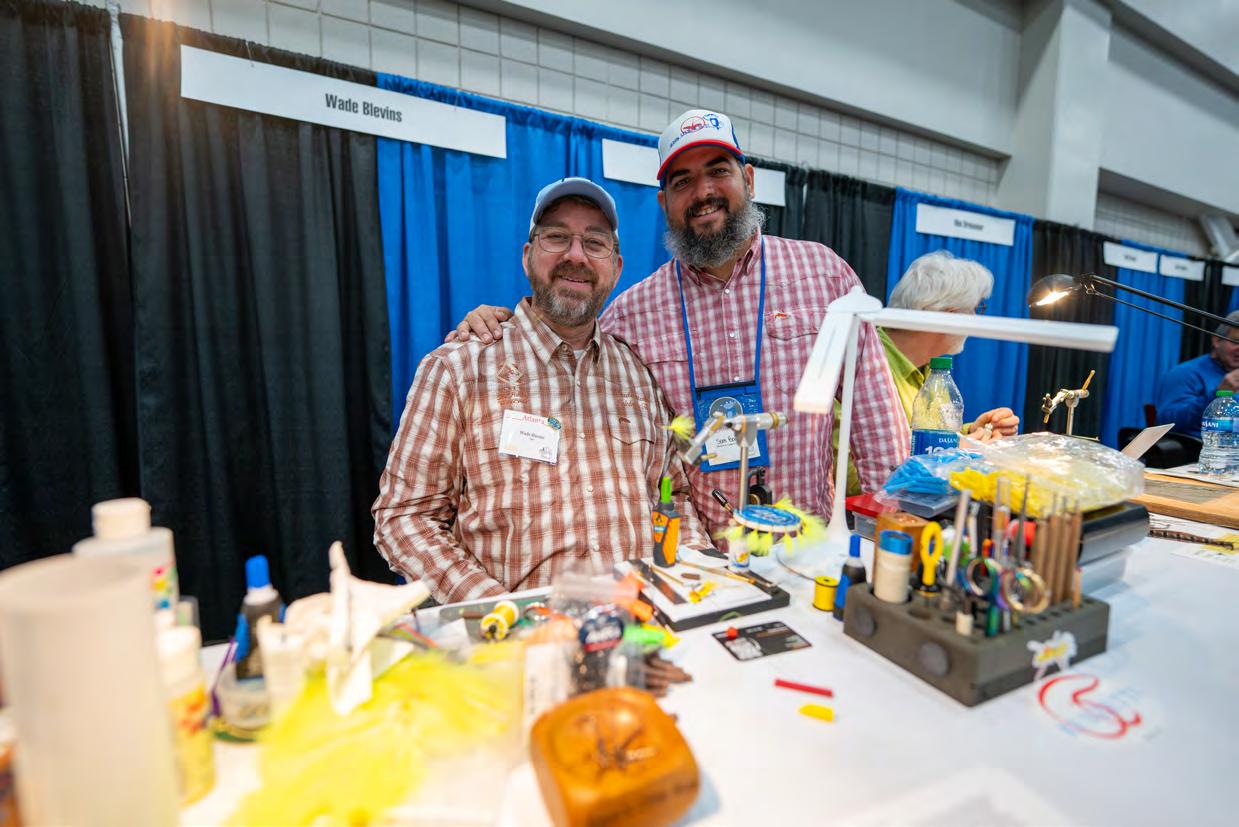
I wish for him to have a caring community that wants more for him than to exploit his able-bodied gymnastic talent. Just as I got the feeling that Grossman and the industry leaders he introduced me to are hoping for SCOF to succeed in its new 2.0 version.

52 S.C.O.F MAGAZINE 53 S.C.O.F MAGAZINE
scof magazine
The Last Father Son
Fishing Trip: Part 1
 By John Agricola
Photos: Gecko
By John Agricola
Photos: Gecko
Itried

I gave it every ounce of energy I had. Just when I finally put the 12 weight with a full 450 grain sinking line and a double-jointed articulated chicken with hooks down, just then our guide, Matt Reilly, set the hook on a 28-inch trophy. I can hear some of you mumbling: “But Cola, a musky should be 40 inches to be considered a trophy.” That is beside the point for this adventure.

It may have been mine and my father’s last fishing trip together, and I wanted it to be perfect for him. A little over a month ago, my father’s neurologist revealed that he is afflicted with Alzheimers, and consequently this diagnosis explains his terrible shortterm memory loss. The musky trip with Matt Reilly was supposed to be something I did on the back end of a second opinion in Baltimore, and I had loosely configured a group of guys to join the adventure. From the moment I planned the trip my father wanted to go. In some ways he wanted to see this part of Virginia because he understood it to have genealogical significance to the history of our ancestors. The burden of Southern family history was still a very real force in what was left of his memory.
Reilly came highly recommended by a fly shop owner that I respect, and as I had never tried for these lazytoothy-bastards, I only knew it was going to be physically taxing to cast that heavy rod for about 10 thousand casts. I knew it was 37 degrees and sleeting a bit. I knew my father was not the same physical fellow who had taught
56 S.C.O.F MAGAZINE
me to double haul 20 years ago. His brain really wanted to fish for musky, so my friends were assembled to do two things: put a musky in the boat and be understanding of my father’s limits.
Sam Bailey is no stranger to muskellunge as he had been an organizer for Hardly Strictly Musky years ago, and his friend Scott Stevenson was who he brought to ride in the drift boat with the photographer who wishes to remain anonymous. Scott has an intriguing mind, I learned rather quickly, when he explained to me that he was the one who came up with the “Jesus Loves Musky” sticker. Who but for Jesus could love a musky with all those jagged teeth?
Scott’s presumption was that Jesus loves all creatures, even musky. I could not stop considering the act of fishing for musky as being like the flagellant Catholic monks who whip themselves for Jesus.


Then there was Colin Dunahee. That is his real name. He is a boisterous fanatic when it comes to musky, though this would be his and my first time fishing for the musky. Colin had caught a few pike. This made him speak as an expert when Sam and Scott had both caught several musky. No one knew Colin yet, and he was filling in for my good friend Shane. Though Colin had the air of a know-it-all, he really did know it all when
it came to foraging for edible mushrooms. He did me a terrific solid by choosing the day that was most cold and miserable, so my father could go on the second and less terrible day. Colin was also a skilled chef, and so he fed us every night of the trip. It was like he had the spirit of a nunahee riding a spiritual bicycle around in his brain. It seemed to be rather three tracked: hunting, fishing, and foraging. Sam kept joking about killing the Dunahee to extract the nunahee sprit inside him.
On the first day, my father was forced to stay in the cabin from 7 am7 pm with no keys to drive around the commonwealth. His driving made me
terrible nervous since he could barely figure out how to use his phone, let alone GPS map a destination. So I took the keys and went and fished in a terrible cold with Colin. I raised a leviathan and performed a figure eight right over its head, but to no avail. Instead of elevating to the fly the 30-plus-inch fish just lowered itself to the deeper part of the pool. Colin got one to eat as the fly flew back to him all wadded up and twisted, then the fish was off. We got home late, and my father was bored out of his mind, since he could not figure out how to change the Netflix watch options. Colin made venison meatballs and spaghetti.

59 S.C.O.F MAGAZINE

The next day went similar to that ‘80s film, Weekend at Bernie’s. We dressed my father for the trip in waders that he borrowed from Sam. It was in the upper 30s when we started so he really needed the extra layer. He tried casting early on, but it was not long before his 73-year-old limbs gave out.
The whole day passed with Matt navigating some very treacherous parts of the New River, and ultimately my father blended into this hunt for musky while allowing Matt to cast for him. He sat and watched patiently until Matt caught one


in the last hour of the second day. Thirty feet out a musky blew up on the lure and he hammered it with the stick.
“Yes!”
I started to celebrate.


“Get the net, John!”
I managed to scoop the musky and Dad had sense to counterbalance the boat while we took pictures. When we were done with the glorious photo shoot, we
all looked at my father who was then sitting on the gunwale. He looked as I imagined he must have looked right before he flipped over his rail at home breaking his back in two compression fractures years earlier. This time the frigid water would catch him.
Matt and I grabbed him, and set him on the cooler before our comedy turned tragic. I will always have the memory of my dad being on the first musky outing of my life. He may not always remember the event, but I will.
Thanks to all my nunnahee friends for sharing this outing. It was a lot of work and very little leisure, but we caught one. Matt Reilly is a skilled guide, and brings excellent conversation. He served fine streamside cooking, and my father did not die, or break his hip in spite of his bad knees and the slippery rock. Jesus and the Nunnahee live for muskellunge.
62 S.C.O.F MAGAZINE 63 S.C.O.F MAGAZINE

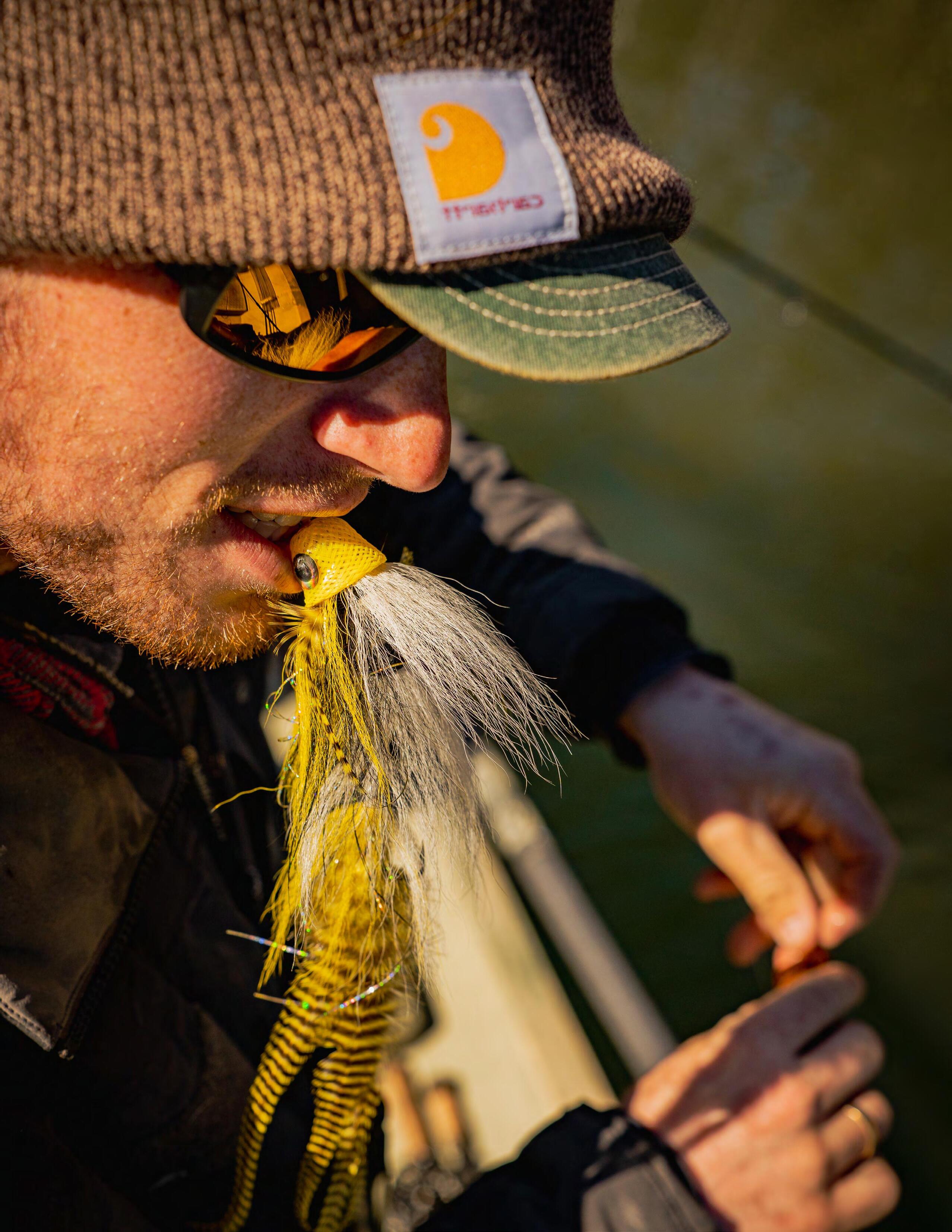



GUIDING SOUTHWEST VIRGINIA AND NORTHEAST TENNESSEE FOR TROPHY FISH MATTREILLYFLYFISHING@GMAIL.COM (434) 996-4067

conservation corner




with dr. profressor steinberg (Ph. D)
of habitats in the larger South. You can be a trout snob, salt snob, carp snob, or bass snob and die happy in the South. There is literally something for everyone. I’ve often thought about the composition of a Southern Grand Slam. Perhaps it could be determined by latitude: redfish in the far south, red eye bass, striper, carp, smallmouth bass, and brook trout in the north.
The glass half empty: Like most areas of the planet today, there is no shortage of threats to fish and their habitats in the South. While we have abundance, that doesn’t translate to sound management in a lot of instances, or any management at all. According to the Center for Biological Diversity, the number of imperiled freshwater fish species in the Southeast has risen 125% in the past 20 years. While again, many of these species aren’t sporting targets, one imperiled species in a stream should set off alarm bells for the larger health of an aquatic ecosystem. So while many anglers wouldn’t notice if a darter disappears, it ultimately threatens the fish we do target. And sporting species aren’t without their own problems. Climate change, poor forestry practices,

stream/habitat fragmentation and dams, the introduction of non-native species, pollution and related contamination, sprawl, and sometimes complete indifference from enforcement agencies all threaten our sporting and non-sporting fisheries resources alike. All these threats are ever evolving and becoming more complex, making it even more vital for greater public vigilance and organizing. We the anglers must drive the conservation agenda. Many of these problems were unknown a generation ago. For example, did anyone ever envision bonefish in south Florida would be contaminated with pharmaceutical residues, as was identified by researchers with the Bonefish and Tarpon Trust? And while invasive species have been around for as long as we have, did anyone think escapee or dumped lionfish would today be found throughout subtropical coastal waters, or silver carp careening into water skiers and boaters in some of our bigger river systems? It’s as if a Carl Hiaasen novel has come to life. And if you aren’t familiar with Hiaasen’s Florida-based writing shenanigans, you need to be. It epitomizes the saying
The glass half full: We in the South are blessed with an abundance of fly fishing possibilities ranging from alpine brook trout in the Appalachian Mountains to tropical and subtropical species such as tarpon and snook along our Southern coasts and beyond. In fact, the Southeast region of the USA, especially where the Appalachian Mountains meet the Coastal Plain, is considered a biodiversity freshwater “hotspot.” For example, our region houses two-thirds of all fish species in

North America, more than 90 percent of all mussel species, and almost half of all dragonflies and damselflies. Many of these species such as the watercress darter or hornyhead chub fall outside the interest of fly anglers (although the chub is pretty cool to catch actually), but it’s still amazing to consider the number of species and the myriad

70 S.C.O.F MAGAZINE 71 S.C.O.F MAGAZINE
“When a man must be afraid to drink freely from his country's river and streams that country is no longer fit to live in. ”
― Edward Abbey
portraits of abbey by frederick stivers (left) & hank (right)
coosa riverkeeper
“truth is stranger than fiction.”
Back to the glass half full: As part of SCOF 2.0, I’d like to use this space to feature and hear from some of the groups and individuals who are working and fighting to protect our fisheries resources in the larger South. These groups are as diverse as our fishing opportunities, ranging from creek, river, and bay keepers, land and water trusts, native fish advocates, brewers, artists, to other groups with larger geographical agendas. Sometimes, these individuals and groups are the sole environmental watchdogs protecting the resource, in other cases they are the driving force to motivate state and federal agencies to do what they are charged to do, protect the resource! In my home state of Alabama, without the river keepers and their legal teams, I’m not certain the state would lift a finger to inform the public when a danger exists, or a spill occurs. Coosa River Keeper, for example, has worked long and hard to make information about fish consumption warnings more accessible to the angling public, with little state enthusiasm or assistance. While in Florida, Captains for Clean Water lit a fire under state politicians to address the ongoing water quality and quantity issue facing the Everglades and beyond. As Edward Abbey stated in Desert Solitaire, “A patriot must always be ready to defend his country against his government.”
The recent and final defeat of the infamous Pebble Mine in Alaska shows that a coalition of sporting interests can defeat even the most powerful extractive industries with deep lobbying pockets. So, drink up folks or quaff what you got, awareness followed by action is half full in this environmental battle for preservation of our Southern fishscapes!




Michael Steinberg is editor at large of SCOF. He is also a professor of geography at the University of Alabama in Tuscaloosa. He teaches and researches issues dealing with environmental management and conservation, mostly in the near-shore tropics. Thus he has forged a perfect life where his professional and personal life (fly fishing) overlap. As a result he is single.
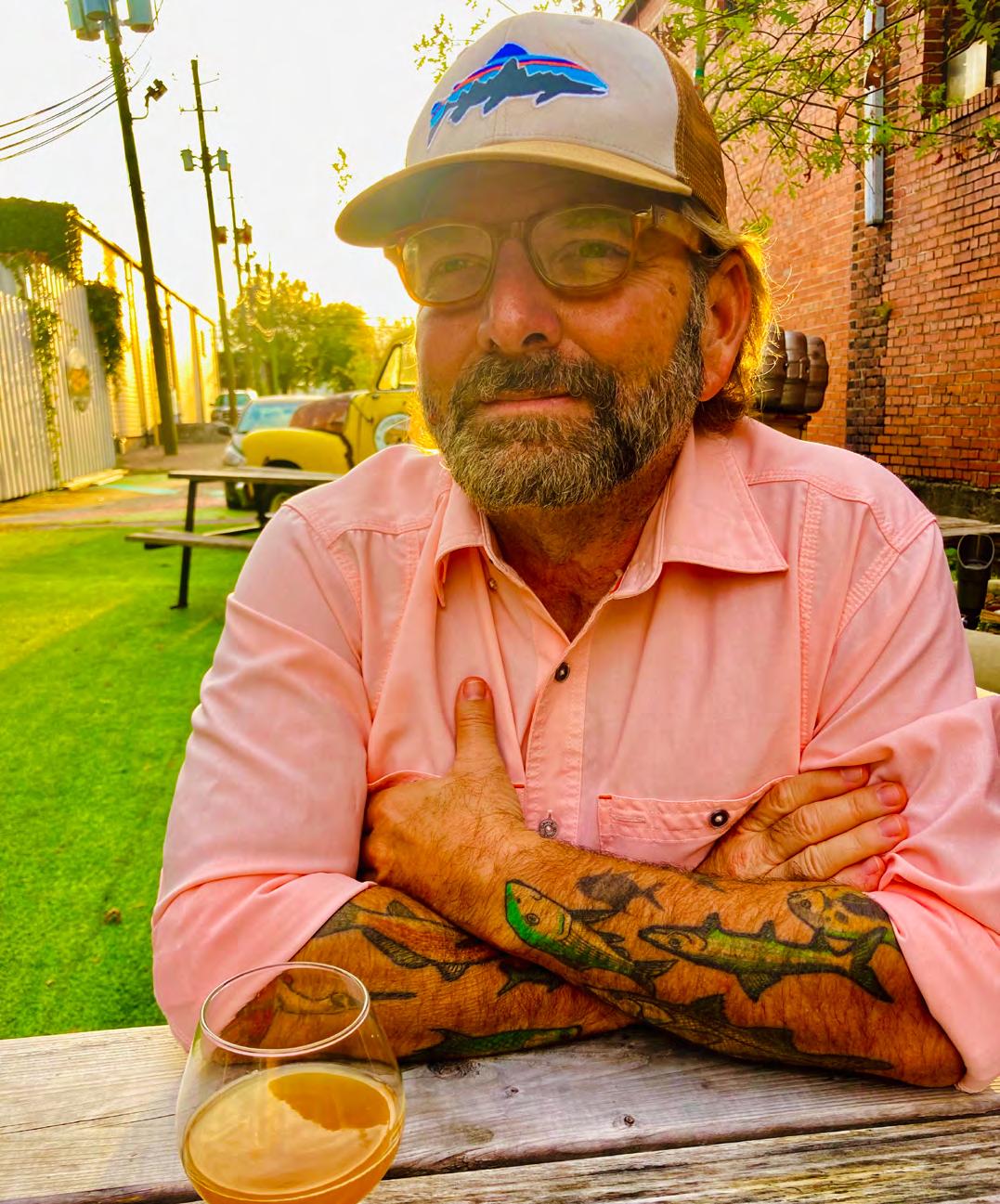
72 S.C.O.F MAGAZINE 73 S.C.O.F MAGAZINE
YOUR FRIENDLY, FULL SERVICE FLY SHOP CLINICS & CLASSES // GUIDED TRIPS // TRAVEL 79 SOUTH MAIN STREET, ALPHARETTA, GEORGIA 30009 ALPHARETTAOUTFITTERS.COM // 678-762-0027
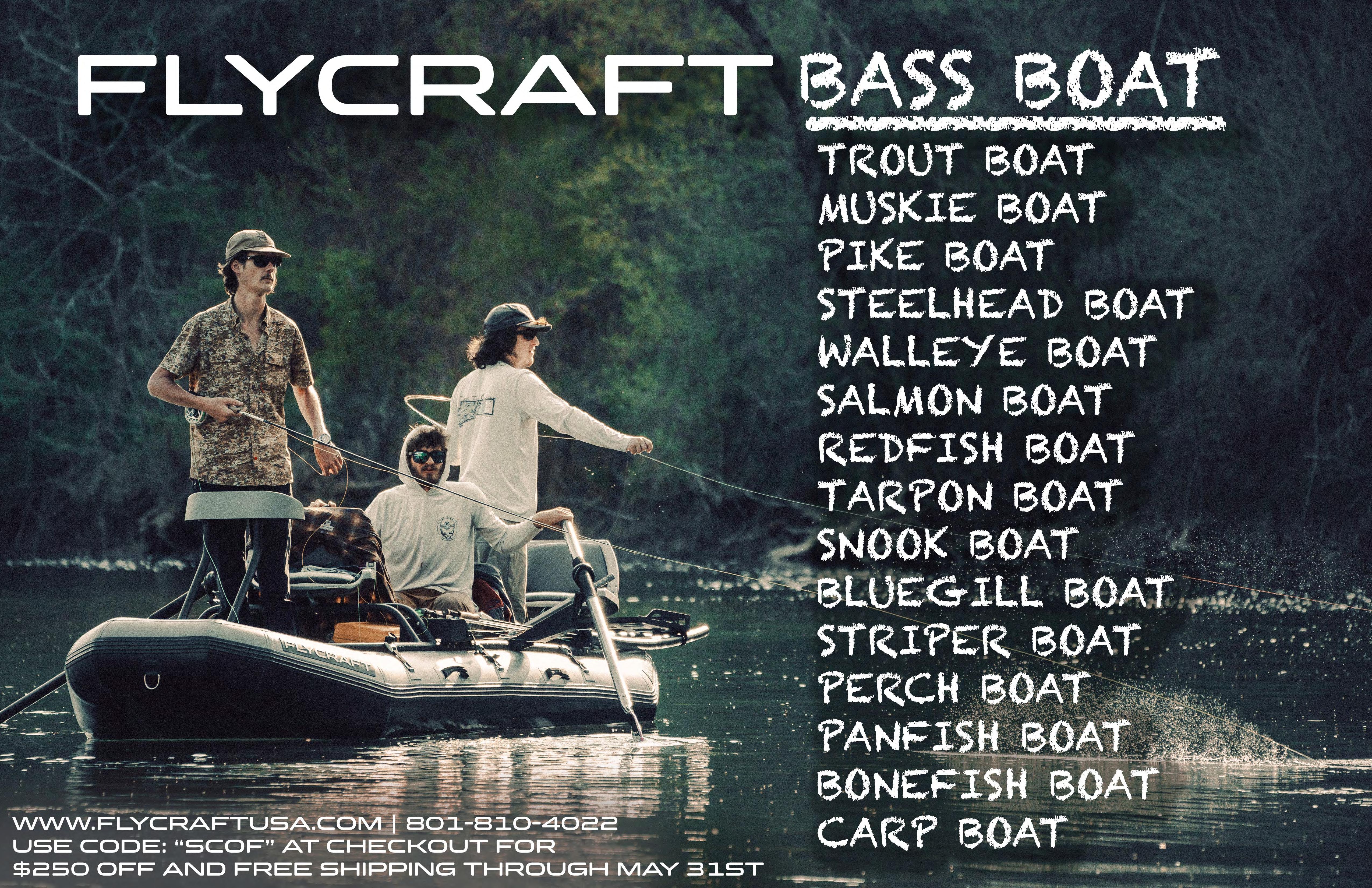
MARDI GRAS REDS
I looked down at the 12-pack of Budweiser in my hand, head aching from late-night drinks in the French Quarter. He was right. Twelve beers wouldn’t last until lunch. “Why don’t you go into the marina and get some more – a lot more.” We hadn’t even formally introduced ourselves with a handshake, let alone stepped onto a boat, and Captain Miles LaRose was already in full guide mode. Handing the 12-pack off to Torie, I turned and walked toward the rust-crusted marina building. Judging from his instruction, I knew we were in good hands for the next two days seeking reds in the Louisiana marsh. I just hoped the marina would sell me a case of beer at 6:45 am. My worry was unfounded. I was in the land of drive-thru daiquiri stands. Of course I could buy beer at that time of day. I would have bought two cases, but they only had one left on the shelf. I returned to the parking lot to find that Torie and Miles had moved down to the dock. A thin layer of clouds over the marsh hid the rising sun and any morning warmth. The channel leading out to the bayou seemed busy with large, industrial boats coming and going.
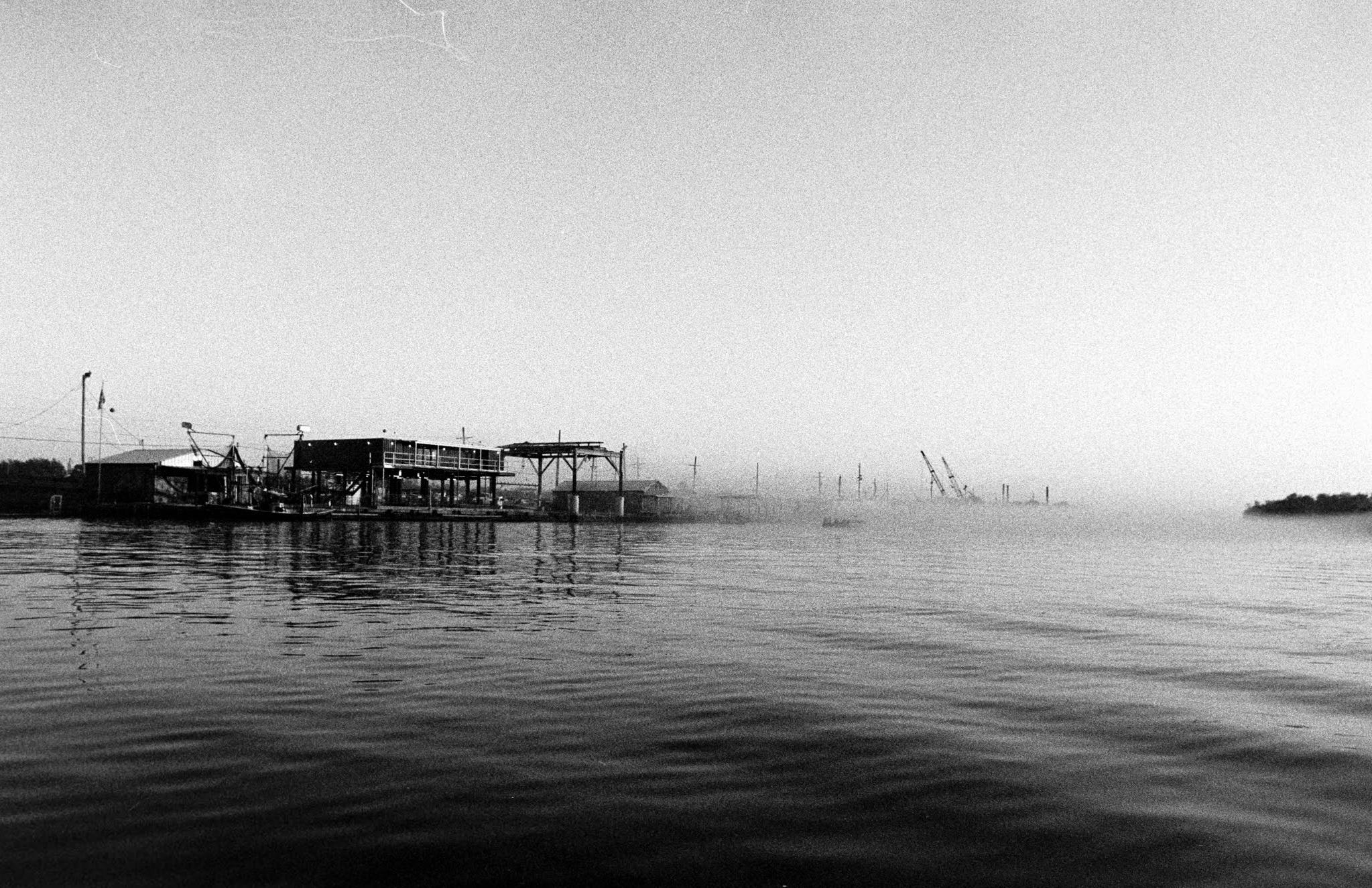
Despite the early February chill in the air, Miles said we were lucky to get such weather. The layer of clouds would burn off later that morning leaving us only light winds to deal with. The next day, he said, was expected to be clear with no wind. These were perfect conditions for first timers out in the marshes.
‘Your Other Ten O’clock”
It wasn’t long before Miles had us speeding full throttle through the curves of what seemed like a maze of seagrass. Since this was our first time with Miles, he explained we wouldn’t be going too far out as he wanted to assess angling skills by going for smaller, “training wheels-size” fish before we set sights on the big ones. Torie took the stand first. Moving silently near grassy edges, he spotted tails long before we could.
“Two o’clock, maybe 25 feet.” She cast deli-
cately into the brackish water. “Recast, a bit further. Perfect. Strip, strip, strip.”
Her line tightened, she set the hook, setting in motion a nice run by the red and the sound of the reel’s drag. She made it look easy. Now came my turn. “Ten o’clock. Get it out there.”
I loaded the rod in my backcast, trying to feel the weight of the heavier line on the heavier rod than I am used to.
“Your other ten o’clock.” Shit.
I changed my angle but, in doing so, lost the energy in the line causing the fly to slap the water not far from the bow. I could hear the collective sigh between Miles and Torie. He poled on until we found another tail waving at us.
“Strip. Strip. Slow. Okay. Strip. Strip!”
I yanked the line and I was on the board, which proved to be good timing because a band of clouds moved across the sky shadowing us and diminishing our vision in the water. We had to wait a good half-hour for the sun to show itself again. In the meantime, Miles set up a makeshift floating kitchen and cooked much-needed breakfast hangover burgers. As he cooked, we explained that we could have used him as a guide the night before as we lost ourselves in the madness of Mardi Gras in downtown New Orleans.
When we booked the trip with Miles, thanks to the help of Torie’s cousin, John (the new editor of SCOF), we had no damn clue we would be in town the weekend before Fat Tuesday. The realization came when we arrived from snowpacked western Colorado to find New Orleans gridlocked by parades, jam-packed bars, long lines at restrooms, and hammered people everywhere. I needed etouffee, gumbo, charbroiled oysters, crawfish, shrimp. Because everything was so busy, I am pretty sure I ate a dry pretzel from a street vendor and a half-warm Hot Pocket at 2 am, although I’m not sure. The fuzz-
GUS JARVIS
PHOTOS: GORDON HIGHT
“You’re going to need more beer than that.”
iness of drinking on an empty stomach had erased much of my memory at that point. The sandwich Miles fried up for us that morning fortified us. It was needed sustenance for the four-beer buzz I had already acquired. Sun out and shining across the bayou again, Miles sped us around as if it was his childhood neighborhood. The marsh sat completely empty of other human life. It felt as if we had the entire gulf to ourselves. Beer after beer were counted almost in sync with red after red. For Torie and me, who are accustomed to ripping big browns from the undercut banks of the Gunnison River, the reds he put us on were ginormous –definitely the biggest fish we’d caught on a fly. He could see the excitement in our eyes as we grew more comfortable casting with distance to his commands. He didn’t say it, but he had big plans for us the next day. But we had another night of New Orleans to tackle first.
Drunk Cab Drivers Know Where to Go
That evening, after meeting up with John and his fishing buddy, Nat, we found ourselves back in the Mardi Gras madness drinking beers and swapping fish photos and stories. I could tell by the slur of their voices that they had much the same day as we did. Too many beers, plenty of fish. “I made us a reservation for dinner at Trenasse,” John said. “We have a half-hour to get there.” I was thankful for his foresight on the matter. We couldn’t have another food-less night in New Orleans. The restaurant, though just across the street, was impossible to reach. We were barricaded from crossing the road, which was the thoroughfare of the evening’s big parade. We could see, almost smell it from our standpoint behind the barricade. John, frantic for Trenasse’s famous oyster log, edged near total meltdown as party beads pelted him in the face while staring at a possible gap in parade
floats. I thought he was going to run for it until a mounted police officer stepped in to ensure he didn’t cross.
“Fuck it,” he said, dejected. “Let’s just go back to the rental and find something to eat near there.”
We found a taxi on a nearby side street adjacent to the parade. We provided the driver the address and he returned a glassy-eyed confused look.
“Can you get us there?”

“Yes,” he said, burping at the same time.
For the next 20 minutes, he drove the littered streets back and forth looking for one that cut across the parade route. When he repeated himself by driving down the same street we’d been down five minutes before, it was then we knew our suspicions were true: the driver was just as hammered, if not more, than we were. He was also clearly lost.
“Let us out,” John said.
We filed out of the cab on a dark, unlit street. The glow of our phones lit up our faces as we searched for walking directions to the rental. It would take us at least an hour to walk there but it
quickly became apparent that, perhaps, we weren’t in, shall we say, the best part of town. We started a quick pace toward an underpass. There were very few streetlights. From the darkness came what sounded like a violent altercation taking place outside a car to our right.

It was our instinct at that moment to find safety, a sanctuary. The entrance to an unlit bar stood to our left. It was hard to tell if the place was even open. Torie tried the door. It opened and the four of us out-of-towners went in with caution. What we found was the most welcoming down-to-earth bar I have ever been to. Music on the jukebox, $2 bottles of snappy-cold beer, and conversation with some of the finest locals we could have imagined. The bartender, who I believe owned this mirage in the desert, detailed the work she does throughout the year in crafting her Mardi Gras Indian costume. We jammed to tunes. Clanked bottles. They invited us to their Super Bowl party the next day and said there would be plenty of food to go around. This bar was one of if not the source of happiness in New Orleans, and we had no idea we were stumbling into it. We went in scared, we left feeling like family. Sometimes, I guess, you need a drunk cabby to take you where you need to go.
Tripling Up in the Chandeleurs
The next morning, we arrived to meet Miles, once again on empty stomachs, but we did bring a sufficient amount of beer. He seemed more excited than the day before.
“We have the right weather. We are going to the Chandeleur Islands,” he said. “The ride will be long and probably rough, but the fish will be huge.” I remember the long ride out in the skiff as being nothing but painful. If you didn’t hold your legs right, each wave vibrating through the flat bottom skiff had the ability to either crunch a testicle or compress your tailbone into your spine. It was, perhaps, the longest hour-and-a-half ride to the middle of nowhere I have experienced. Worth it? These reds were certainly not the training wheels we caught the day before. They were big, so big

we could barely hold them up for the camera. He started us off slow. And by slow, I mean one big red at a time. As the afternoon wore on and the Jim Beam took hold, he complicated things.

“Three o’clock. Way out there. Nice. Strip. Strip.” Tight line. As I reeled, I could hear more instructions to Torie. “Strip. Strip. Yes! Double!” As I fought the monster, I turned to look and saw Torie had a rod doubled over in her hands. Then, off the back of the skiff, as Torie and I danced around each other with our rods, Miles flipped his wrist and sent a spinner out near a patch of seagrass. In seconds he was hooked up as well. Chaos aboard the skiff ensued as we each worked to land our fish. I hadn’t smiled that big or laughed that hard in a long, long time.

That day, the Chandeleurs were a fly-fishing amusement park. If you wanted a ride, all you had to do was send out a line. We were lucky. The weather was perfect. All we needed was the right guide to take us where we needed to go. We also needed a hell of a lot of beer.
Fully outfitted fly shop guided fishing boat supplies good hangs



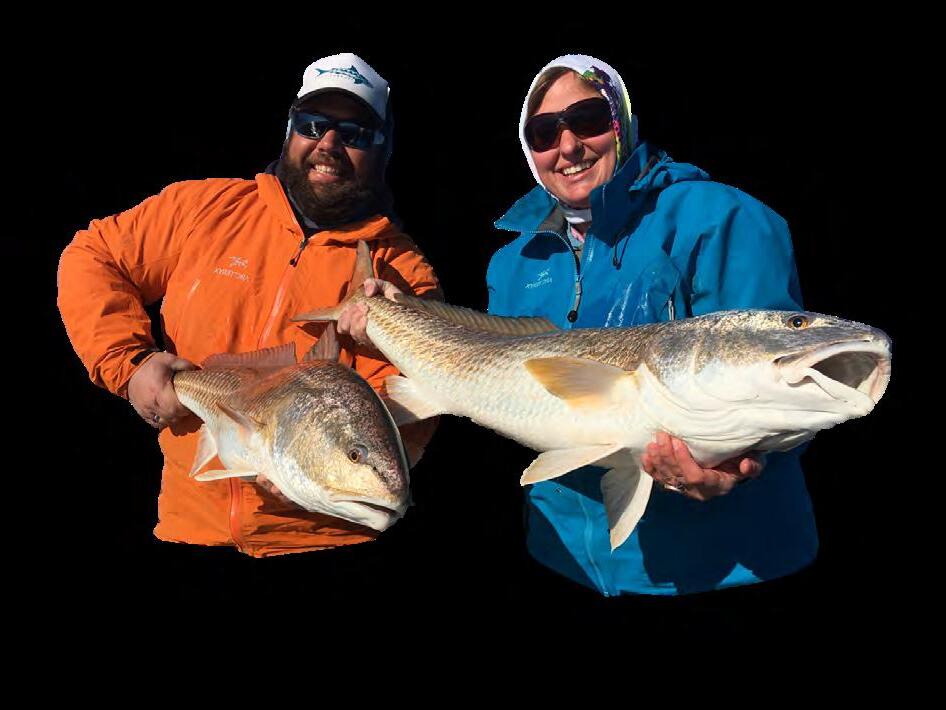 1226 LA-46 St Bernard Louisiana
1226 LA-46 St Bernard Louisiana
fur and feather matinee with fletcher sams








here to watch
click
Janus' Game: the two faces of fly fishing

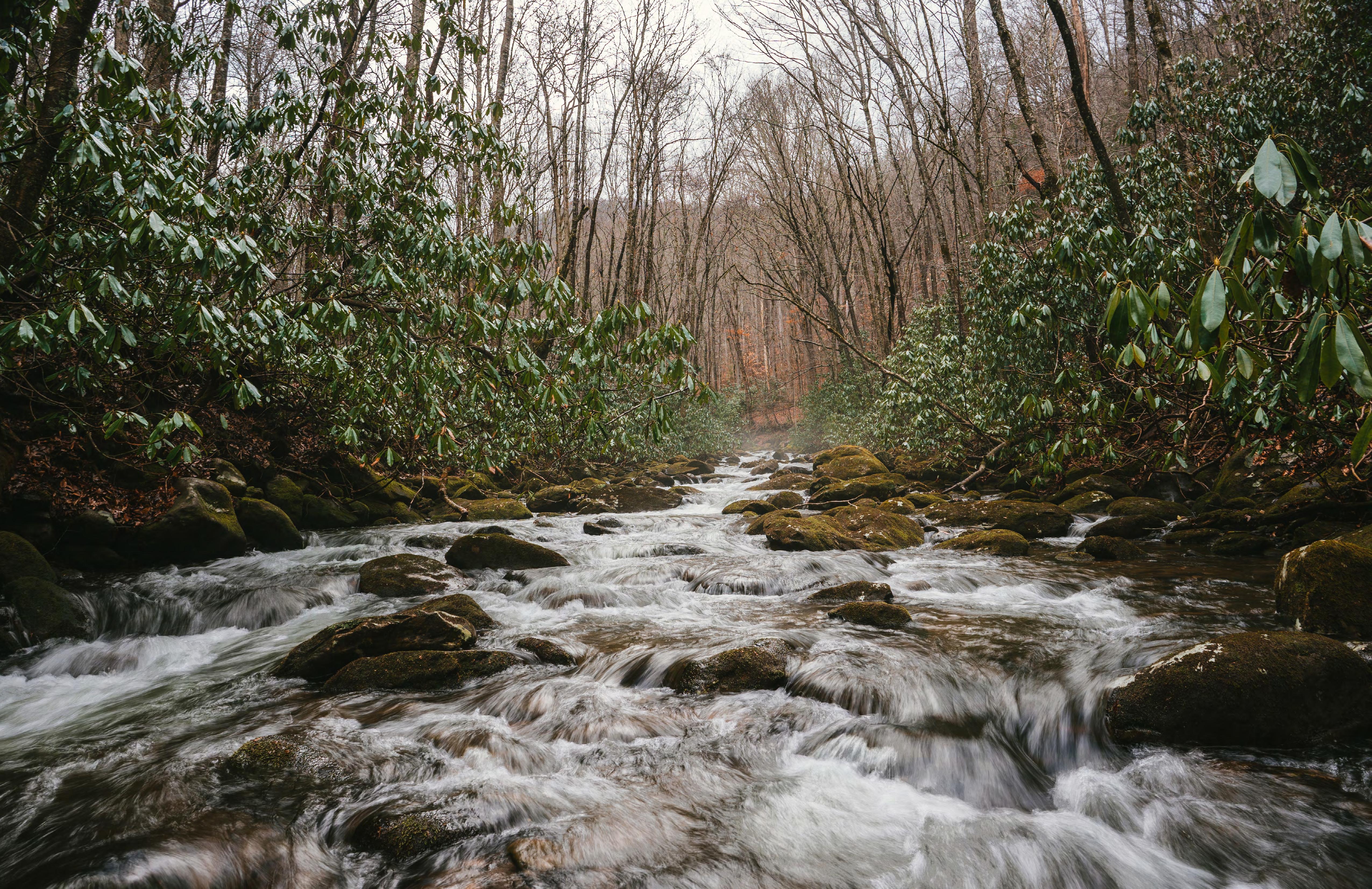 by Jacob Eanes
photos: Collin Fuller
by Jacob Eanes
photos: Collin Fuller
Janus, the two-faced Roman god of duality, may as well be the god of fly fishing, too. As the god of contradictions, fly fishing deserves to fall squarely under his purview. The month of January is even named for Janus, which is fitting because perhaps there is no more incongruous fishing during the year than what we are presented with in this, the dead of winter. Fly fishing is rife with contradictions. So much about the pursuit we love is in direct opposition to itself. In the present day, fly fishing is often viewed as a conservation-minded endeavor though at its most basic roots, it is a means of harvest and a “blood sport.” Consider that even the most zealous supporters of catch and release fishing use flies tied with the skins, furs and feathers of animals not so lucky as to be released. No matter the care and effort taken by catch and release fishermen to ensure the health of their targets, it is impossible to guarantee that all of the fish they hoped not to kill will survive. The dichotomies associated with fly fishing run so deep as to be completely inseparable. Few if any familiar with the sport would say that fly fishing is the easiest way to catch a fish. What is it then about the added complications inherent to our chosen method that draws people into a more difficult way to catch fish?
So much about what makes fly fishing oxymoronic is in the context of the individual angler’s quarry. When most people consider fishing they expect that the angler will pursue and attempt to catch the largest possible fish. While that is true for many, consider the small wild and native trout of the meandering high altitude creeks. These diminutive fish are targeted the world over not due to their size, eating qualities, or robust fighting skills, but instead for something more. The intangibles. Ponder the reason that so many fishermen would spend the time, energy, money, blood, sweat and tears to catch a fish that would seem at place in a home aquarium. The pursuit is the primary motivation for many anglers. The catch itself, secondary. Within most every angler is

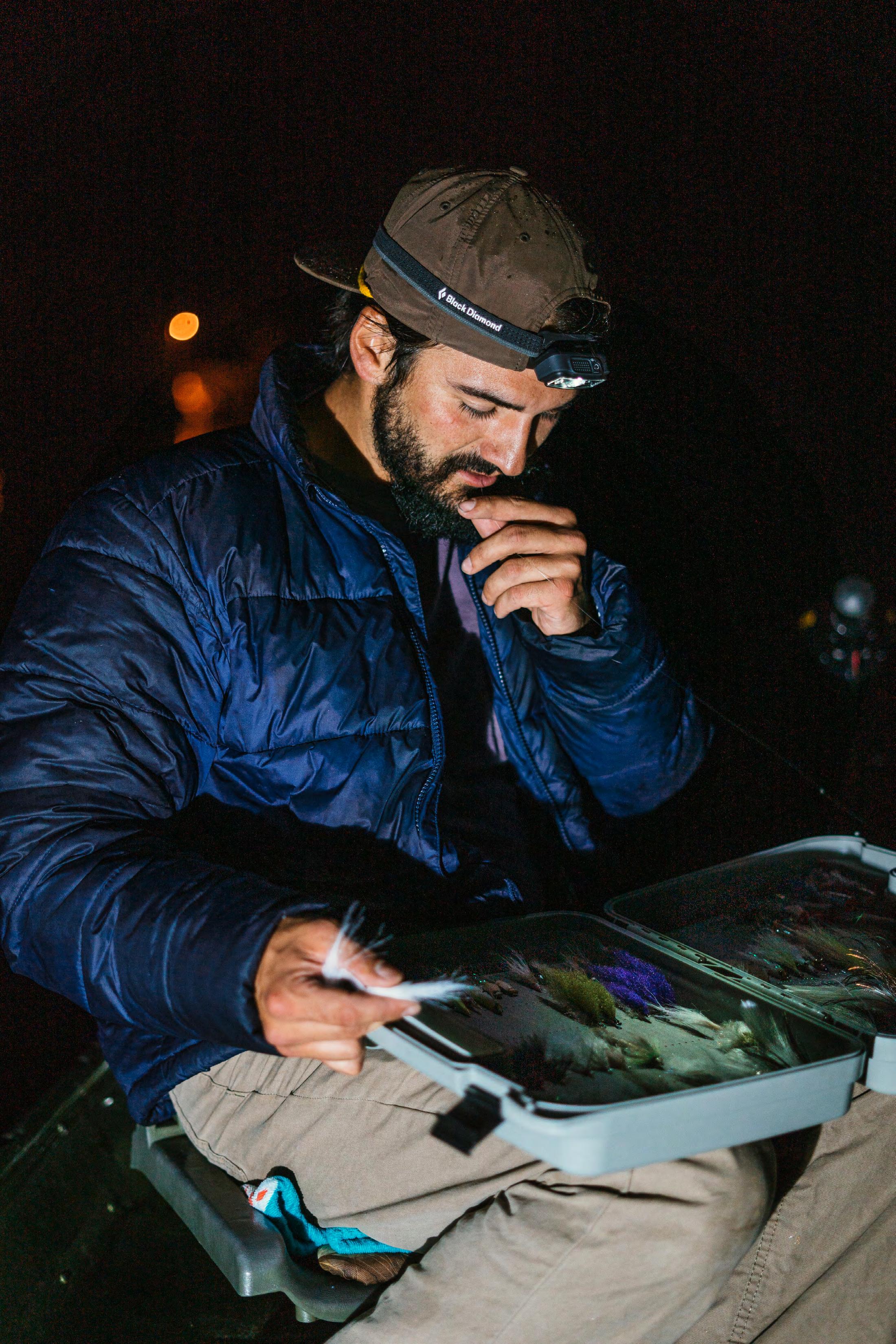

87 S.C.O.F MAGAZINE
conceivably the desire to catch the biggest, baddest fish around. I am absolutely at ease with myself when backpacking and carrying my one weight rod in search of native southern Appalachian brook trout, but my pulse also races while hunting down striped bass in the reservoirs of my north Georgia home. I attempt these two things in the same sport with outwardly similar tackle and often even on the same day. There is little to no correlation between the effort and money I expend and the size of the fish I catch. Explaining this to an outsider can be nearly impossible. How could these two incomparable fish achieve parity to an angler while for all of human history the larger fish would be the far more valuable one? This train of thought has been hammered into our genome for time immemorial as survival is what dictated our pursuit. Even today our society is infamous for its ‘bigger is better’ ethos. Why then, does fly fishing culture so frequently break from countless years of precedent and even from modern social norms?

I often spend more effort catching smaller fish, and shockingly to some, this is intentional in some ways. I fly fish for the peace and serenity it helps me attain as much for the achievement I feel while chasing big fish. So, here in the dead of a north Georgia winter I have two primary fly fishing options that most appeal to me and that are in direct contrast to each other; the small stream wild trout that rarely measure more than eight inches long, or the aggressive striped bass that average eight pounds. To fish in the high altitude rhododendron with the slight warmth of the weak winter sun or to launch the skiff at night on a glassy reservoir? Beautiful, parr-marked rainbows and brookies or linesiders with powerful broom tails? Every day invokes this question and every winter day elicits a different answer.
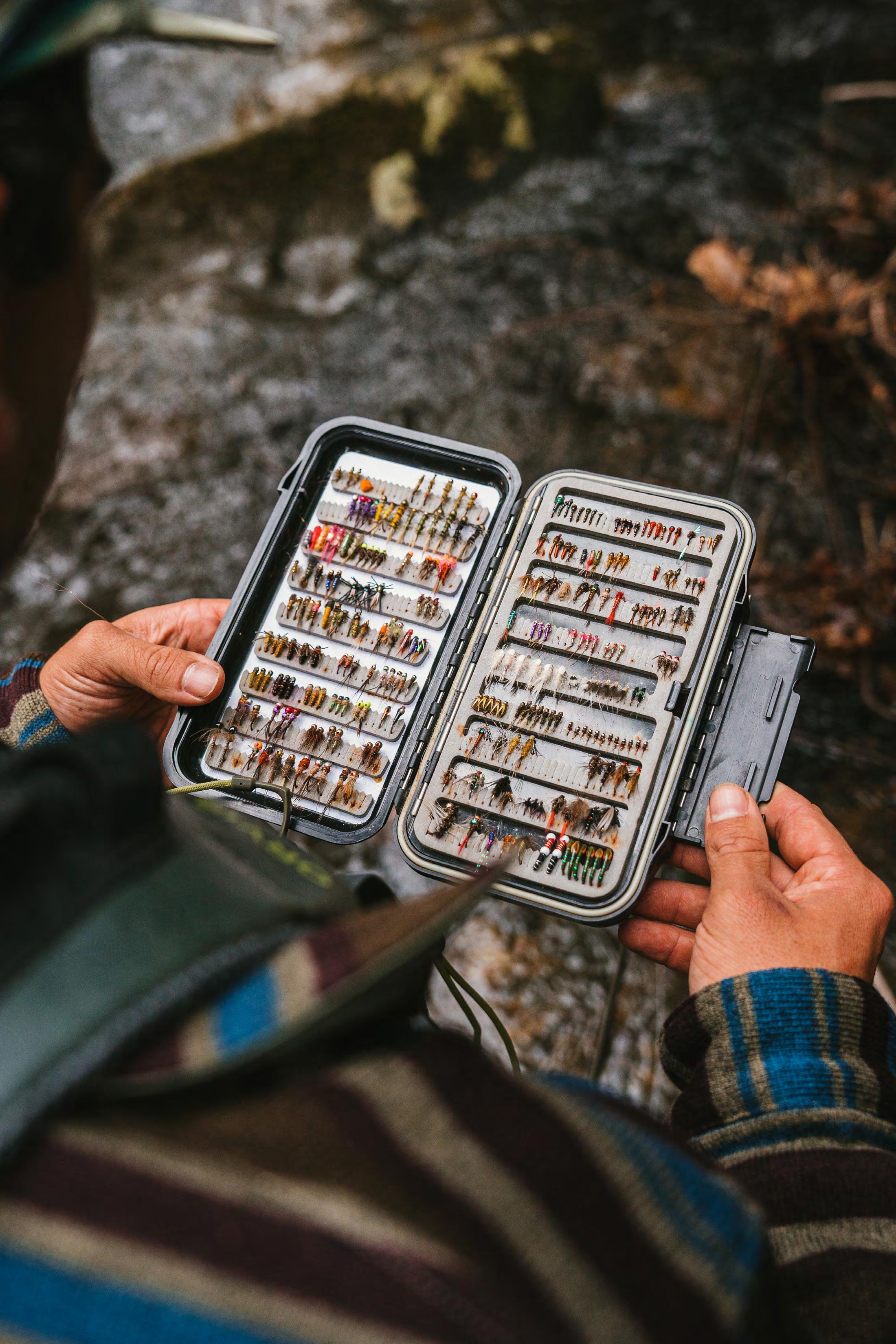
As the days grew shorter and colder in our area, so too did some of the fishing grow hotter and more explosive. These are the two faces of January as I find them. As night fishing for striped bass reaches its peak during the winter and early spring, I still surprisingly find myself just as often opting for the greater difficulty and ostensibly diminished success found while fishing for wild trout. Not long ago I discovered that I generally fish with two distinctly different attitudes and purposes, either searching for a kind of inner peace or conversely for some form of outward achievement. The intimate nature of a trout stream is typically where I find the former

88 S.C.O.F MAGAZINE


whereas the latter often comes on bigger water and in pursuit of typically larger fish. While it’s true that it is terrifically fun to catch big fish with a fly rod, I have learned that in my personal experience, I split my time somewhere down in the middle in choosing which form I prefer my efforts to take on a given day. It may seem odd, but my click-and-pawl one weight reel feels just as exciting to me as my nine weight rod outfitted with a stiff backbone and heavy tippet. The slashing attack of a tiny brook trout is no less impressive to me than the comparatively massive striper engulfing baitfish. With the stressors of our modern world, I can always find a respite in the solitude of the mountains. With personal and societal pressures for achievement, I also crave the capture of big fish to prove my success.
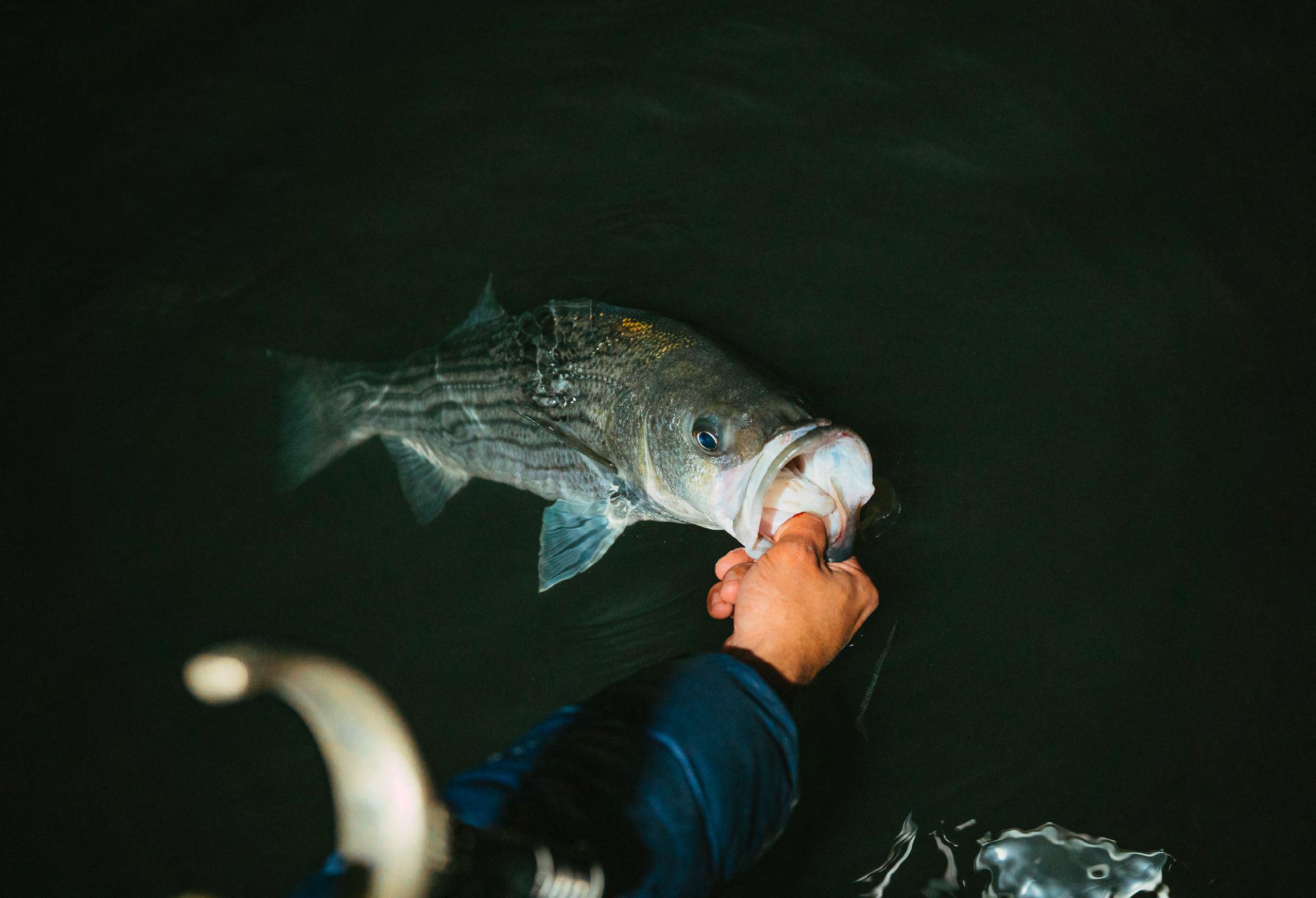
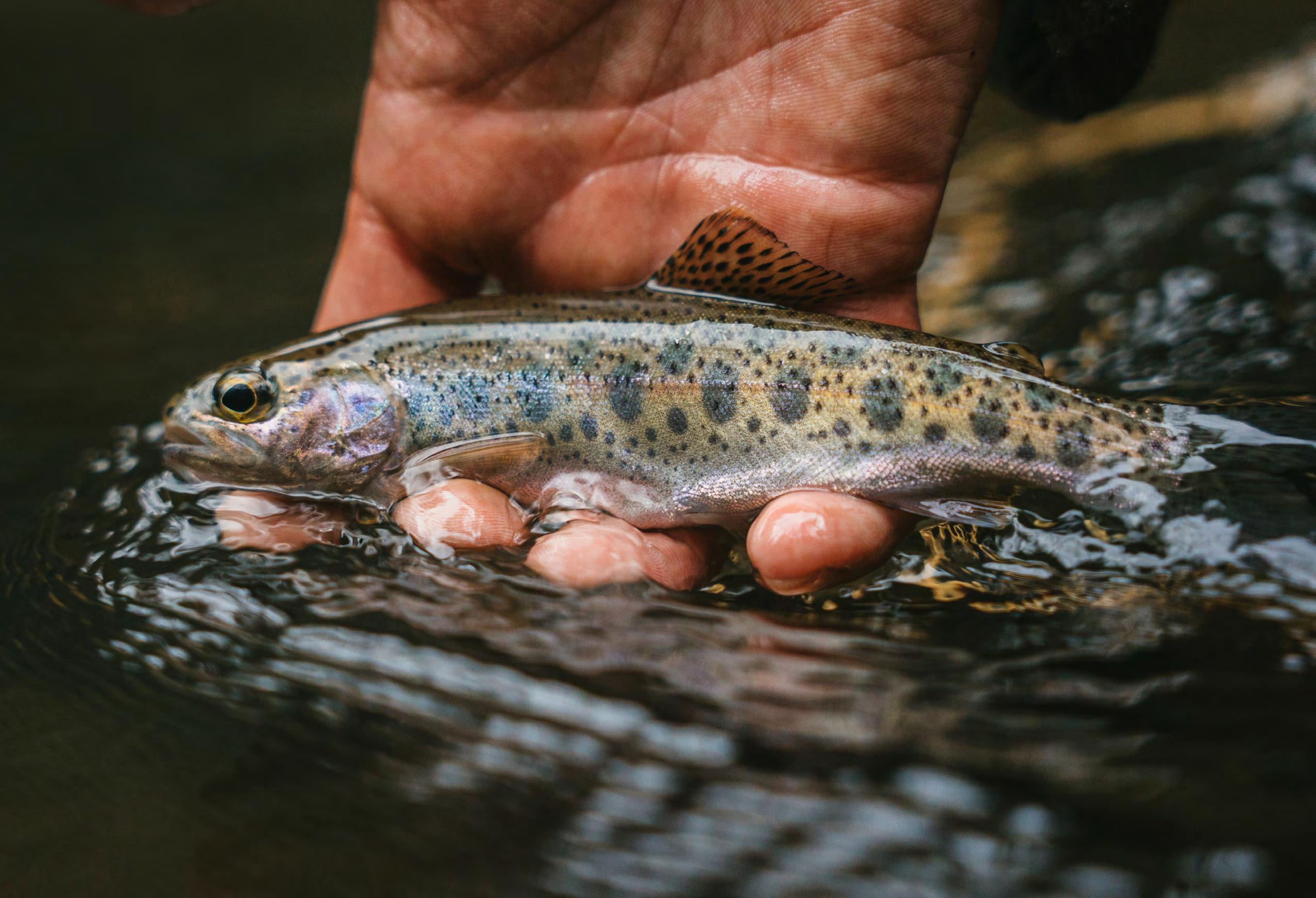
I recently went whitewater rafting with a new friend from Lithuania. He’s substantially older than me and comes from a generation and culture with priorities different than my own. Be-


tween wild runs of whitewater on our recent excursion down the Nantahala, he inquired into my passion for guiding people in fly fishing. He asked all of the “typical” questions about where we fish, what we fish for and all thereof. After some contemplation he said, “I just don’t get it. How someone could pay you to take them fishing only to release the fish back to the water, it’s beyond me." Right there is one of the greatest ironies of fly fishing. For thousands or maybe tens of thousands of years, we as a species have hunted and fished in order to survive. It’s only in the last half a century that the idea of pursuing and then releasing a potential food source has entered the zeitgeist. Catch and release is not the forgone conclusion that many in the fly fishing community take it to be. I relished the opportunity to share my feelings regarding fly fishing to a neophyte, so I dove in with my friend explaining, “Fly fishing is about so much more than the act of fishing. Is it the easiest way to catch a fish? No. Is it the most efficient way to catch a fish? Absolutely not!

92 S.C.O.F MAGAZINE 93 S.C.O.F MAGAZINE
But the reason we do it is because it connects us with nature. So, it’s clearly not about the fish themselves or what calories they can provide us. Look at where we are right now,” I exclaimed, gesturing to the steep walls of the Nantahala River Gorge. “If we wanted the most convenient and efficient way to travel, we wouldn’t be barreling down this whitewater river either. We are here for the experience, for the pursuit of adventure and to establish a deeper connection with nature. The journey on the river and the act of fly fishing are very similar, they should be a reward in and of themselves.”How is that for irony? That the main goal of fishing is, at least sometimes, something other than catching fish.


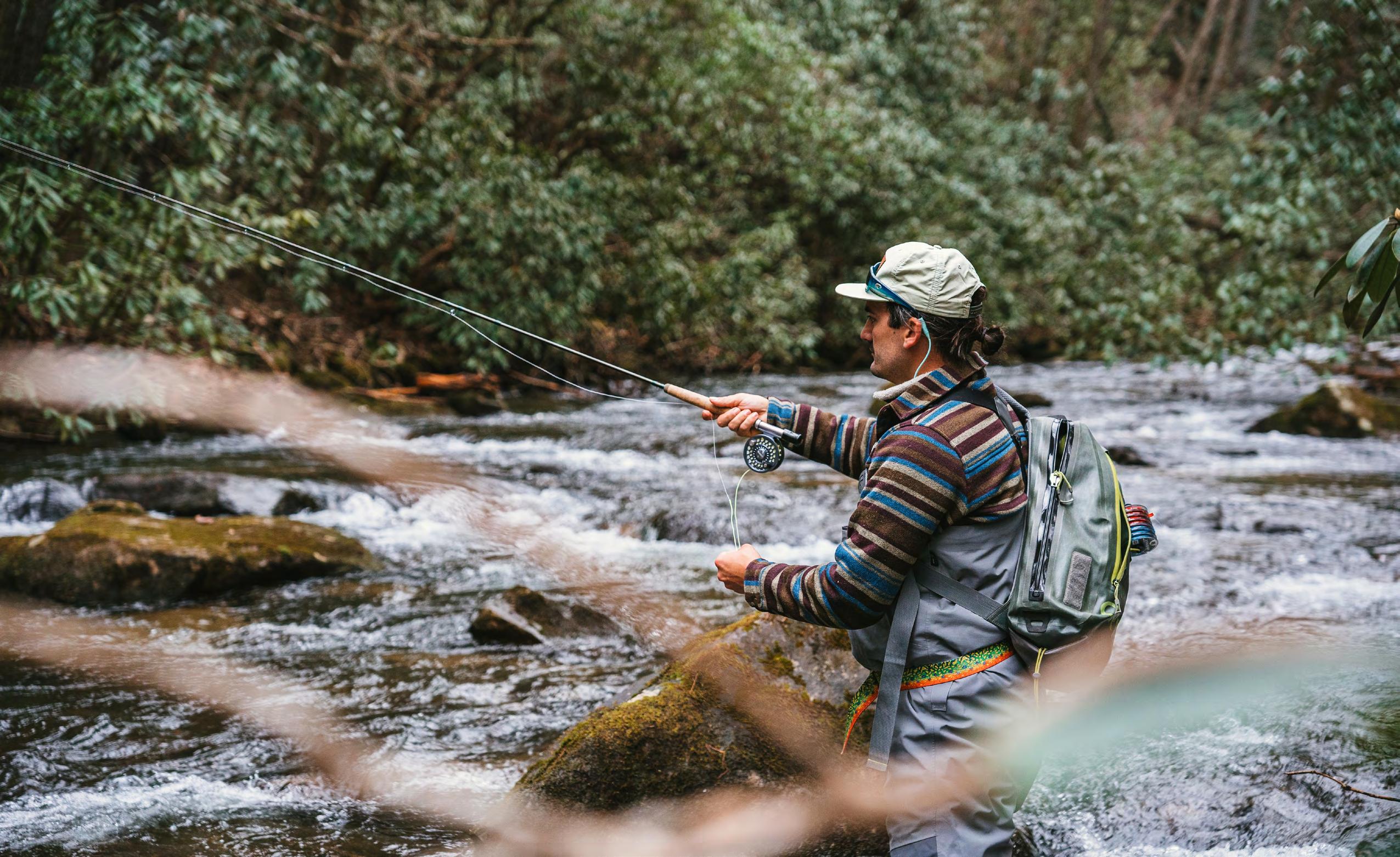
I believe that for nearly all people, water holds a certain pathway into the soul. For countless generations, our species has been completely and inseparably dependent on water. Both in its innate life-giving properties as well as for the opportunities it has provided us. Now, there are even studies that effectively describe the demonstrable mental and physical health benefits of being beside large bodies of water. I believe that this obvious pull to our collective unconscious is a manifestation of our eons of dependence on water and all that comes with it. Why do we fly fish? Sometimes it may be as simple as the desire to be near the water. The urge to be standing in the stream as the current tugs at our legs or the skiff breaks the light chop beneath us. The atavistic call of water speaks to all of us if we only pay the slightest attention and the two faces of fly fishing provide the watery lens by which myself and others view our natural world.


94 S.C.O.F MAGAZINE 95 S.C.O.F MAGAZINE



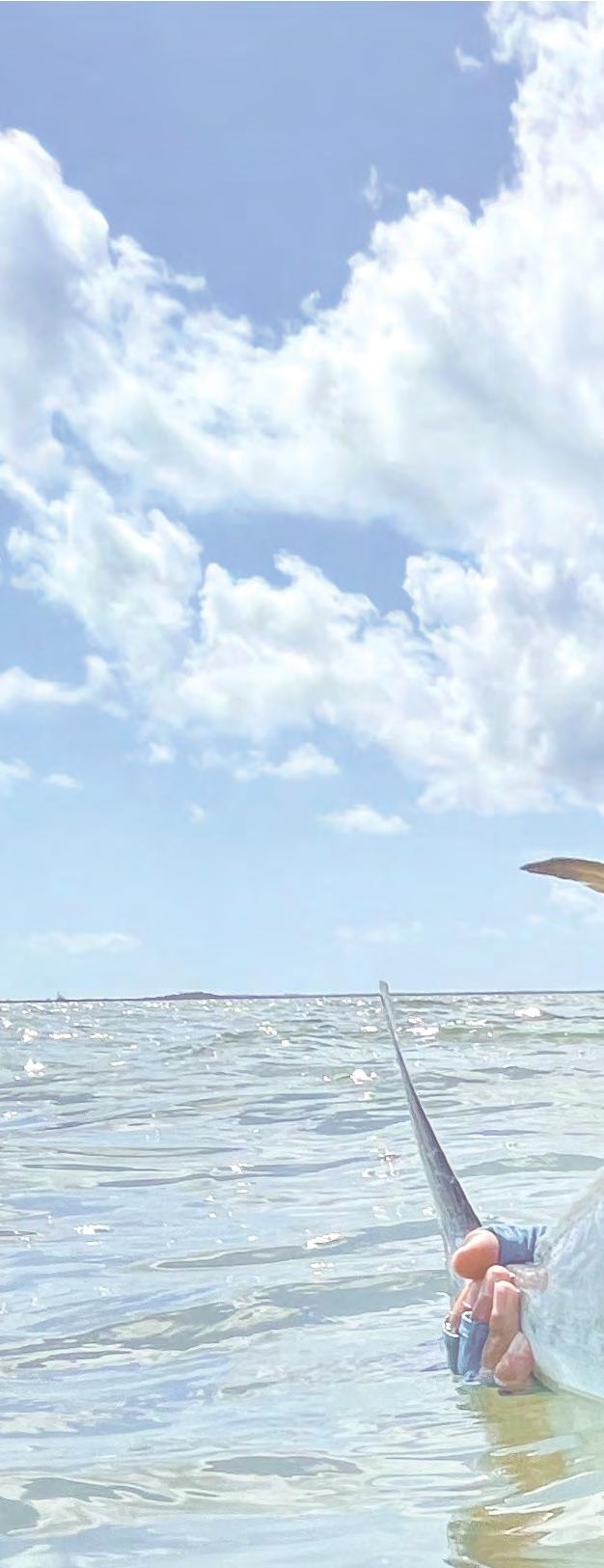






www.scottflyrod.com Scott Fly Rod Company Handcrafted in Montrose, Colorado A Surge Forward in Performance The new power and performance series of rods handcrafted by Scott has come ashore at a dealer near you.
Photo: Chris McCreedy
in praise of the redfish salt marsh
 by Michael Steinberg
by Michael Steinberg
Many fly anglers and our industry in general are fixated on finding the next angling frontier destination. Ideally, these are virgin waters where no fisherman has made a cast. This fixation is understandable given the growing pressure on traditional destinations as the popularity of our sport has grown, as well as larger environmental issues, which lead to fewer grip and grin shots. We all want to cast to naïve and generous fish, unhurried by competing boats and rival anglers. And even if we aren’t in a recently opened destination, we hope our guides will lead us to some hard-to-reach or secret spot avoided by less motivated “vacation” anglers. I have climbed through many mangrove tangles and slogged through thigh-deep mud in search of hidden bonefish lagoons, sometimes even finding success. On one occasion in a specific location in Cuba, I am certain I was the first fly angler to ever wrinkle that water with a fly line. I’m not exactly sure why that has meaning other than the fish were incredibly aggressive, but it does indeed have meaning. Perhaps it’s the angling equivalent of being the first to summit a new peak. But these virgin waters whether they be the Bolivian jungle or some remote atoll in the South Pacific are usually harder than hell to get to, increasingly rare, and ridiculously expensive to visit. So sometimes it’s good to take stock and appreciate the opportunities closer to home, even if those opportunities aren’t in far-flung, exotic waters.

In this case, the opportunity closer to home is the redfish and their marsh environ. The redfish nor the salt marsh need any sort of introduction. It’s probably the most commonly targeted saltwater species in the coastal South. It also has a huge home range from Virginia to south Texas, so there are plenty of opportunities to fish them. However, even though it’s a popular species, it still seems to take a backseat to “The Big Three” – bonefish, tarpon, and

permit – especially where the species’ ranges overlap. I’ve had many conversations at lodges or fly shops about people’s obsession with one or all of The Big Three, but I have never heard anyone tell me how they identify as a redfish specialist. I realize it’s probably assumed in many places such as the Low Country simply because redfish is the most common nearshore species to target on a fly, but it still seems like they are treated as a poor man’s cousin to the grand slam, not quite as exotic or sexy as The Big Three. Before the Cajun food craze, some folks even referred to them as trash fish, to which I take great offense. I find casting to flood tide redfish just as challenging (sometimes more so) as any gamefish ...

So, my mission today is to carry the proverbial banner for redfish. I’ll carry the banner for many reasons, but first and foremost because they represent an impressive fisheries conservation success story. This history may be unknown to many of the younger members of the audience because, based on numbers today, who could imagine a coastal marsh without redfish? But that wasn’t always the case. There was a time in the late 20th century when they were rare. New Orleans Chef Paul Prudhomme developed the blackened redfish dish, which became the rage across the nation. The absurd popularity of the dish caused the redfish population in the Gulf of Mexico to plummet to the point that the fish had to be protected from

100 S.C.O.F MAGAZINE 101 S.C.O.F MAGAZINE
peter perch
purse seins, which targeted adult aggregations. As the population crashed, federal regulations were initiated to protect the breeding stock of redfish in Gulf waters. And after intense lobbying by sport fishing groups such as the Coastal Conservation Association, many states also acted by banning inshore commercial harvests and gill nets. While that’s a brief and ridiculously incomplete history of redfish conservation, their healthy numbers today represent one of the great sporting conservation successes in our industry.


But beyond patting ourselves on the back, I’ve come to appreciate the redfish and the marsh for so many other reasons. I find few other angling landscapes as intriguing as a salt marsh. Every season presents a new canvas, with colors reminiscent of the work of Charleston, SC artist Betty Anglin Smith (if you don’t know her work, check it out). Summer is alive with earthy smells and sounds. Schools of shrimp jump and pop. Cruising big mullet fool me, causing my heart to skip a beat and my guide to shake his head. Ospreys hover and out-fish me. Oysters squirt, croak, and crack, reminding me they aren’t just a prop hazard. Flocks of tree swallows buzz by, thankfully eating a few of the bloodsucking mosquitoes. And the organic smells of exposed mud and oyster beds create a Pavlovian response where I can’t wait to find a raw bar that evening. The sounds, sights, and smells are of an environment that is truly alive, which in turn sharpens my senses. Fall and winter represent a quieter time when the ecological engine slows a bit and far fewer anglers. The marsh remains alive with fish of course, but also migratory ducks, and a hue of colors ranging from rusty marsh grasses to pale blue and purple winter skies. The fish may be a bit less aggressive, at least until the sun reaches its zenith, but they’re still around and still need to eat – at least that’s what I tell myself when the angling turns slow. Surely, they still need to eat!

Even the sounds of distant shotguns, culling the teal population I assume, are a welcome distraction from the silence because it represents a change of season in my mind’s eye.
The tides play a role in my marsh fascination as well. I’ve never spent time in a landscape that changes so radically between high and low tides, especially the extreme tides. As an outsider, I can fish the same spot during different tides and they are largely unrecognizable. One moment I’m trying to delicately land a fly amongst the marsh grass stems, the next I’m blind casting in channels and the grass is high and dry. I have developed deep respect for my guides who (usually) flawlessly navigate these waters with oyster beds inches below the surface. And because of that respect I’ve never been tempted to do it yourself (halfass it) with a rental boat, likely to be stranded quite literally up a creek without a paddle.
Beyond aesthetic rewards, redfish and the marsh represent a personal refuge. I often find myself casting to reds on various solo holidays. As a single, middle-aged dude whose grown kids live far away, I often retreat to the marsh to avoid the dreaded lonely holiday. Fly fishing, even on the slowest days, is far more rewarding than kicking stones and feeling sorry for myself. A day in the marsh even made last Thanksgiving dinner spent in the Beaufort Waffle House not only palatable but enjoyable given the previous six hours spent on a bow. Besides, if I’m paying a guide, he must talk with me, so I’m never alone, right? Sarcasm aside, the very fact that the marsh and its redfish are accessible make it possible to serve as a refuge and sometimes reward when I treat myself to a birthday trip. It may not be an isolated atoll, but it is a beautiful setting to contemplate fish, friends, and life. As Thomas McGuane wrote in his brilliant collection of fishing essays, The Longest Silence, "I had in my own heart the usual modicum of loneliness, annoyance, and desire
for revenge, but it never seemed to make it to the river." When I’m fly fishing for reds, I feel no loneliness, annoyance, and have no desire for revenge; they do not make it to the marsh. Instead, I feel grateful that such an angling landscape exists and that I have access to it.
102 S.C.O.F MAGAZINE 103 S.C.O.F MAGAZINE
RODS
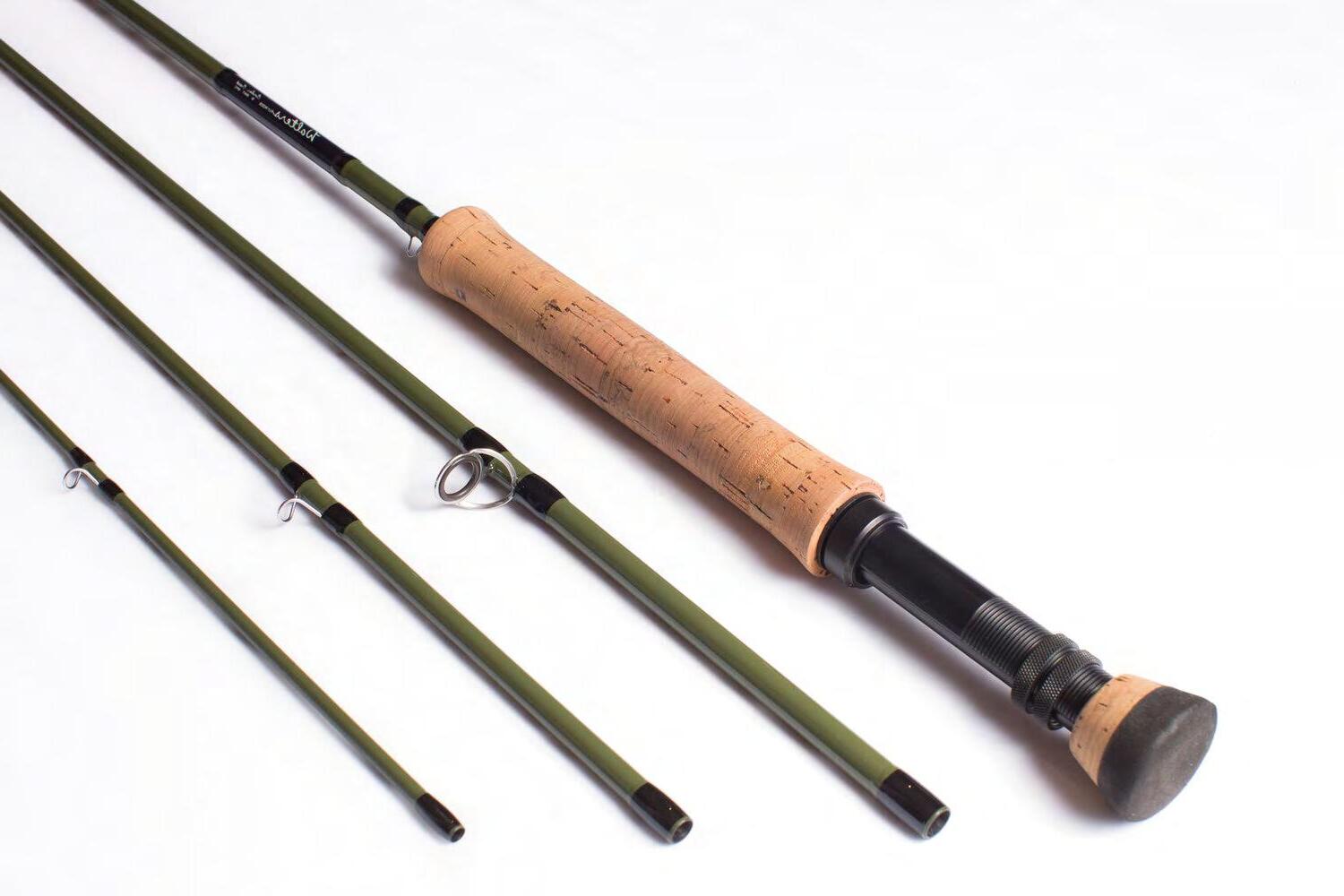
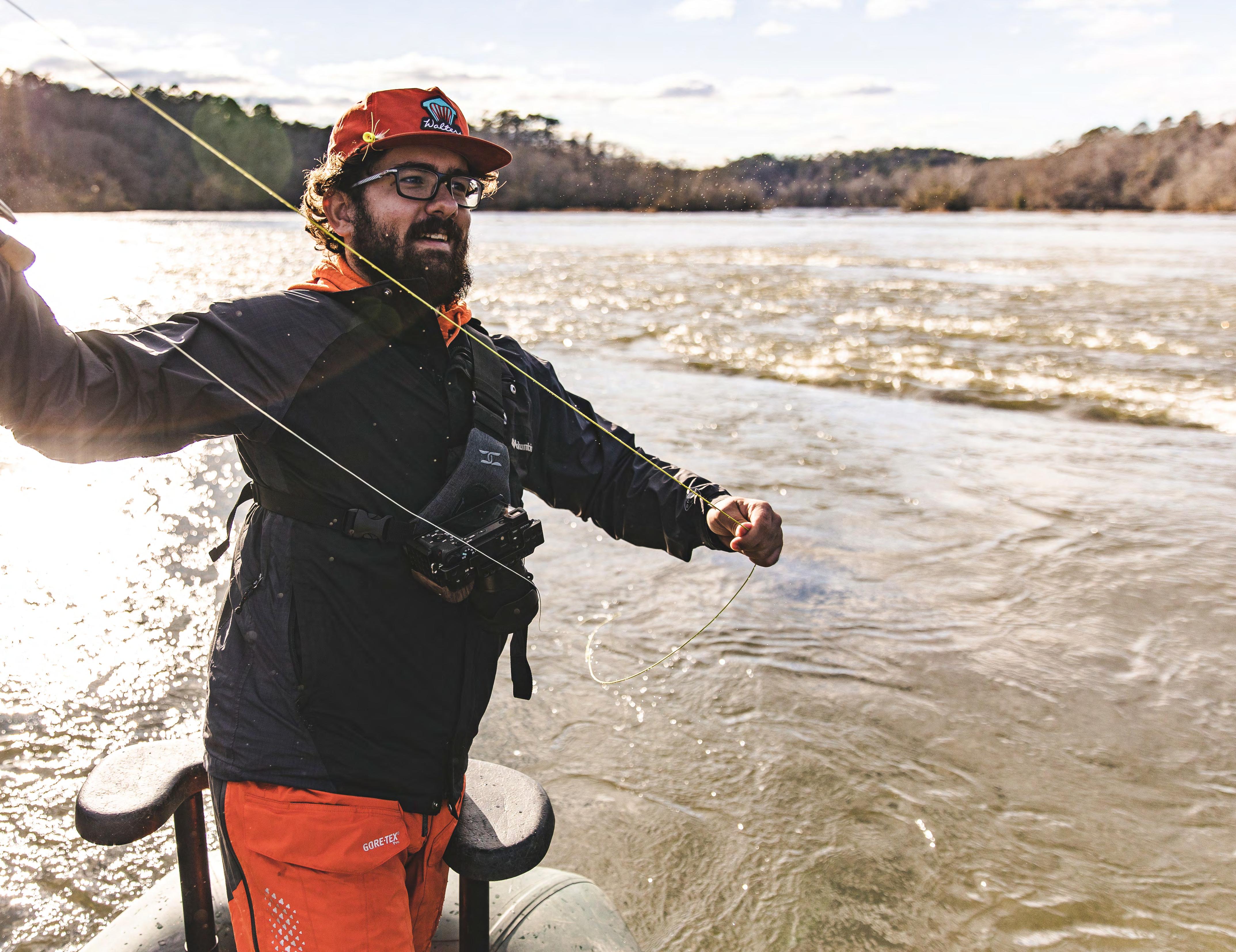 photo: Craig Godwin
photo: Craig Godwin
WaltersFLY
snag's chili
INGREDIENTS:
• 3 lbs elk, venison, beef tips or round steak cut into ½- to1-inch pieces.
• 4-5 pieces thick bacon diced
• 2 cups diced onions
• ½ cup flour
• 1 Tbsp salt
• ½-1 Tbsp black pepper
• 1Tbsp garlic powder
• 2 cans petite diced tomatoes
• 1 Tbsp ground cumin
• 1 Tbsp paprika
• 1 Tbsp chili powder
• 2 cups beef stock
SOUTHERN CAMPFIRES WITH CRAIG
HANEY

METHOD


1. Brown the bacon in a Dutch oven and add the onions before the bacon is done. Cook until the onions are soft. Take out the bacon and onions and put aside.
2. Dredge the meat in the flour, salt and pepper and brown in the bacon drippings in the Dutch Oven.
3. Return the meat to the pot and add the bacon, onions, garlic powder, tomatoes, beef stock, cumin, paprika, and chili powder.
4. Add enough water to completely cover the ingredients. Bring to a boil then reduce the heat and simmer 2-2 ½ hours. Add water as needed.

In the cooler months of the year when fishing the Southern Appachians, my buddies and I will enjoy on one night of homemade chili that has been simmering over the fire or on the stove. This is not the quick and easy kind made with commercial chili mix and ground beef. It is very much an upgrade made from a recipe given to me by an outfitter’s camp cook in Wyoming some 30 years ago.
Three buddies and I spent a week with the outfitter and his crew hunting mule deer and antelope. The camp cook, Snag Williams, provided great meals all week and his elk chili was an instant hit. The chili was cooked over a low fire in a huge Dutch oven outside the ranch house. When Snag saw us coming to eat he grinned and said, “I hope you brung an appetite ‘cause this chili cures the hungries and warms your innards.” He didn’t lie. We cleaned out the pot and sopped up what was left with some of the best sourdough rolls I have ever eaten. Before we went back to our cabin, Snag handed me the recipe he’d jotted on a grocery sack with a nub of a yellow pencil that seemingly was always stuck over his ear. He said, “It’s almost as good with beef as it is with elk, but not quite.” He was right, but it is still darn good chili!
I always make the recipe a day or two before the trip so time is saved and we don’t have to do anything but heat it up for supper. Once made, I put the chili in large Ziploc bags and put it in the fridge until we pack forthe mountains. A box of fresh saltines and a bag of shredded cheese are needed and added to the stash.
5. What, no beans? The original recipe did not call for beans but I usually serve pinto beans cooked with a ham hock on the side. You can always add a couple of cans of your favorite beans (drained) to the chili if you prefer.
Author’s Note
Part of the fun for me and my buddies while on a fishing trip is eating good food, not just the usual quick chili, hot dogs, spaghetti or burgers. I’ve collected a lot of recipes over the years that have proven popular in camp or cabin on these trips.

In Southern Campfires, I’ll be sharing some of these recipes as well as cooking tips, my favorite cooking gear, including some knives I use in the kitchen, and product reviews.
Hopefully you will try these recipes and enjoy them whether in camp, cabin or at home.
Craig Haney

S.C.O.F MAGAZINE 107 S.C.O.F MAGAZINE
“It cures your hungries and warms your innards.”



outfitting the mindful outdoorsman may2023 |no47
photo: gordon hight
The Back Page

natural progression
by mad mike benson
There was a point in my life where I earned the name “Mad Mike”. A moniker I fully embraced with the enthusiasm only a twenty-something with no money in his checking account and a cooler full of cheap beer can muster. I spent every waking moment thinking about and implementing plans to catch fish. Whatever kind of fish that I was obsessed with at that moment. Designed new flies, tried new spots, new techniques, different levels of sobriety. I was truly a mad man. Older guys would come fishing with me, or let's be honest, take me fishing as they usually owned the boats. And I would just laugh between swigs of beer when they would say stuff like, “It's just nice to be out here” ... or, “I'm happy just to be on the water. I don’t care if we catch a fish...”
Now I know that the progression of fishermen through the well-established clichéd stages of development has been beaten into the ground ad nauseum so I won’t get into all that. But now I'm a bit older... not old mind you... but older. I also have a small human in my home that demands an inordinate amount of time, money, and attention. Add into that I decided to fully restore a 30-year-old flats boat, a project that has taken 3 years and an amount of money that would just be impolite to put into print, not to mention bad for my health if my wife read it. So, let's just say I don’t get to fish as much as I used to. Hell, I don’t fish as much as the guys I used to make fun of did. I still obsess, I still dream, still play with fly designs, talk about, and pretty much live with one foot in the water... But I'll be damned if when I do set foot in a buddy’s skiff, peel back the tab on the first of maybe two beers I'll consume that day and take a look around, if I don’t say to myself, “I don’t care if I even catch a fish... it’s just nice to be out here...” Ole Norman Mclean might have been “Haunted by waters” ... I’m haunted by a twenty-year-old version of myself with a ten-beer buzz shaking his mohawk at me with disgust in his eyes... f*ck off kid... I’m busy...


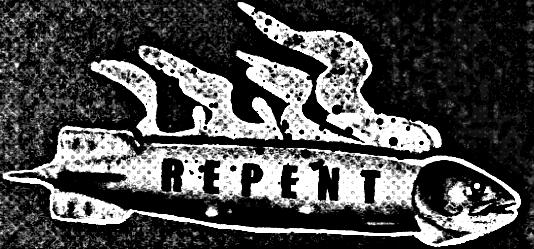
S.C.O.F Magazine | issue no. 46 | winter 2023 | The Takeover



















 Photo: New RIver, Virginia - January 2023, Gecko
Photo: New RIver, Virginia - January 2023, Gecko
 Photo: New River, Virginia - January 2023, Gecko
Photo: New River, Virginia - January 2023, Gecko


 Photo: White River, Arkansas - a month in 2019, Alan Broyhill
Photo: White River, Arkansas - a month in 2019, Alan Broyhill

































 By David Grossman
Photos: Steve Seinberg
By David Grossman
Photos: Steve Seinberg










 photo: Everglades February 2021, Alan Broyhill
photo: Everglades February 2021, Alan Broyhill








 By John Agricola
Photos: Gecko
By John Agricola
Photos: Gecko






























 1226 LA-46 St Bernard Louisiana
1226 LA-46 St Bernard Louisiana








 by Jacob Eanes
photos: Collin Fuller
by Jacob Eanes
photos: Collin Fuller
















 by Michael Steinberg
by Michael Steinberg




 photo: Craig Godwin
photo: Craig Godwin





















